We spend 4 days in Seville, it was our first stop in Spain. we flew into Barcelona from Dallas and then took Iberia Airline to Seville. We took a cab from the airport into town, we were charmed right when the taxi entered the town, the narrow colorful picturesque orange tree-lined streets, the Moorish Palace, the beautiful Cathedral and the horse-drawn carriages at every corner made us fall in love with the little town of Seville. Here is a look at Alcazar Seville and Plaza de Espana. We especially loved visiting España around golden hour when the setting sun cast a beautiful glow.
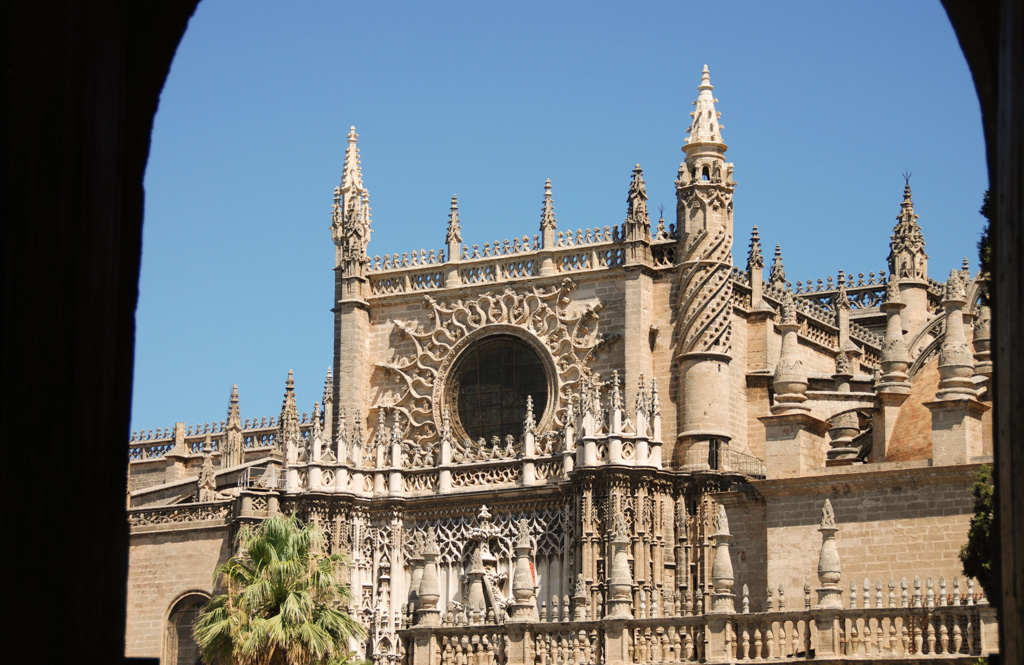
WHAT IS IN THIS POST
Plaza de España
The Plaza de España is one of the most remarkable constructions of the 20th century, and of the city in itself. Its size is spectacular, and it’s even been used as the backdrop for several films. Along the half-moon building, there are detailed tiles and ceramic handicrafts, symbolizing Spain and its relationship with Latin and South American countries.
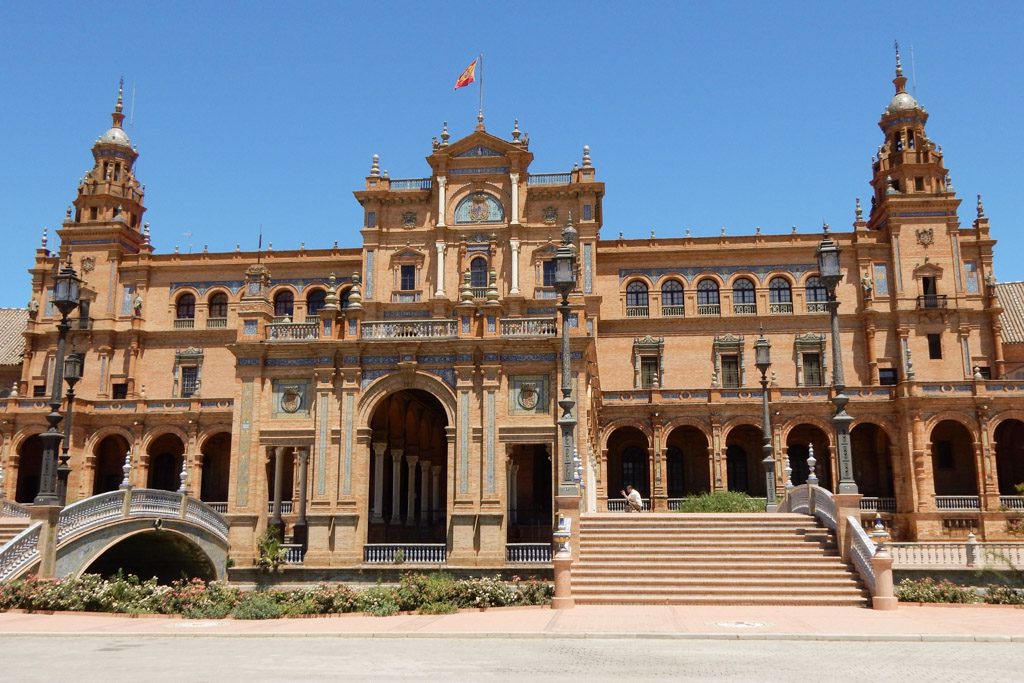
Originally built in 1929, the Plaza de España was created to showcase the talent and creativity of Spaniards during the Ibero-American Exposition. The backdrop of this plaza is a large semi-circle building, designed in an eclectic mix of Renaissance Revival, Art Deco and Neo-Mudéjar styles. As you make your way through the area, you’ll notice painted ceramics (known as azulejos) throughout.
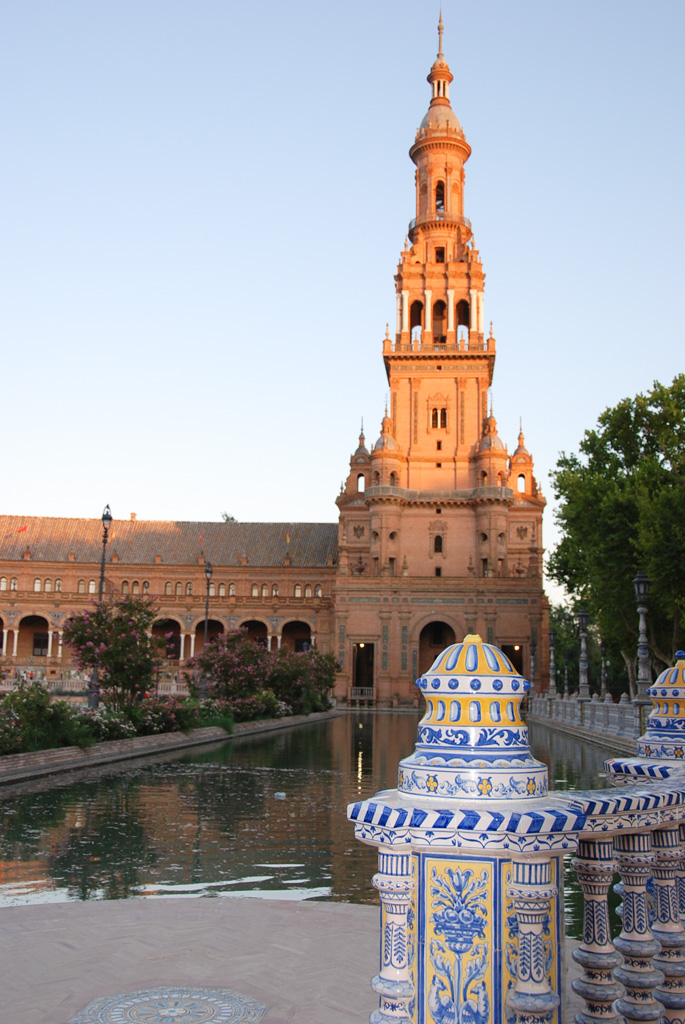
Everything from the banisters of the fences, to the many of the lamp posts, have been carefully painted and decorated. The fountains, the tiled benches that represent the different provinces in Spain are beautiful. The square is surrounded by a long D shaped canal (1,690 ft) that is crossed by four bridges, each one representing the four ancient kingdoms of Spain (Castile, León, Aragón and Navarra) where you can hire small rowboats and row-row-row a boat and admire the Plaza de Espana.
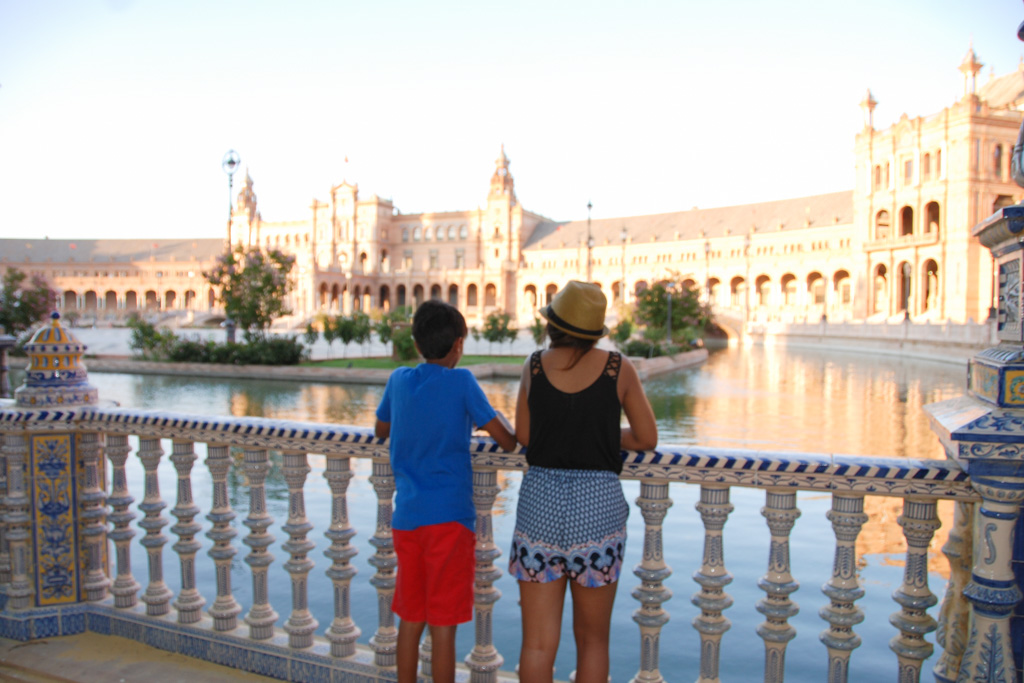
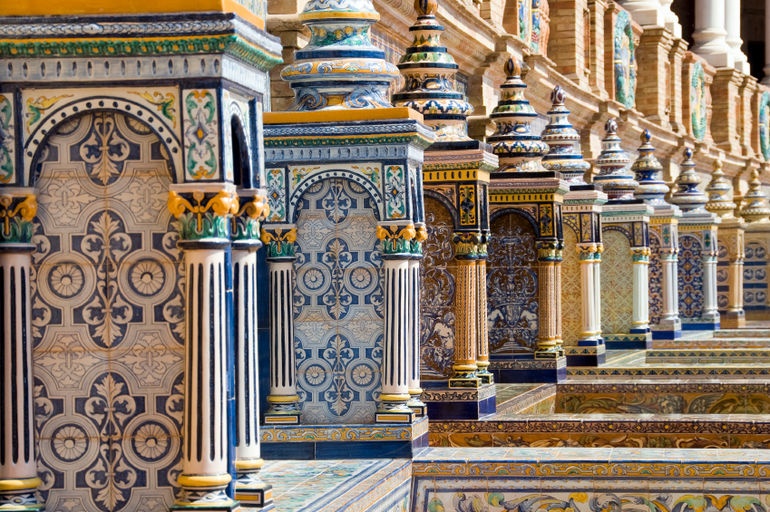
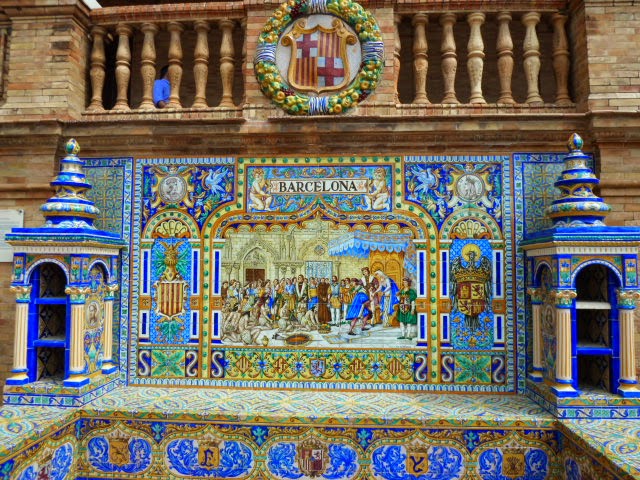
Breakfast by the Seville Cathedral
The next day we started with breakfast at Horno San Buenaventura (Avenida de la Constitución, 16) right across from the Cathedral. Sevillians love to have a quick breakfast of coffee and bread, if you want anything more substantial like eggs this is the place for it.
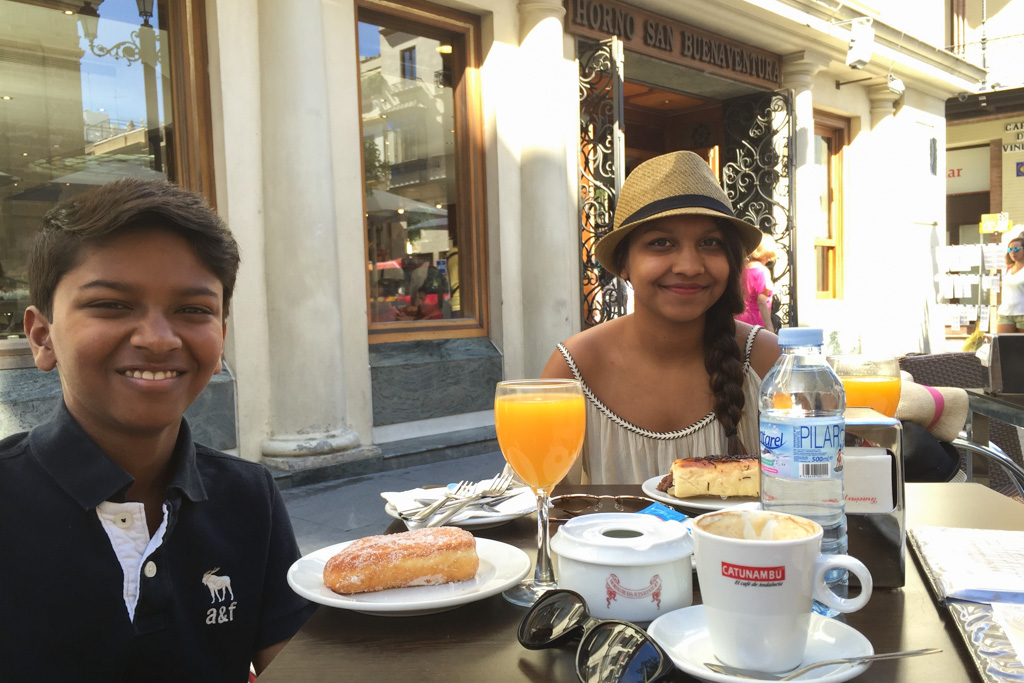
Read: Spanish dishes, drinks and desserts to try
Alcázar
We walked along the Cathedral to reach the Plaza del Triunfo looking for the Lion’s Gate – the Seville Alcazar’s entrance. The Alcázar is one of the most impressive monuments of Seville. This royal palace was built in the 14th century, and as time went on, more buildings were added to the complex, resulting in a mix of Arabic styles and Christian influences. The word Alcázar is a synonym of the castle (castillo) and it comes from the Arabic word al qasr. Both the palace and its gardens are beautiful, we walked around the different rooms and gardens.
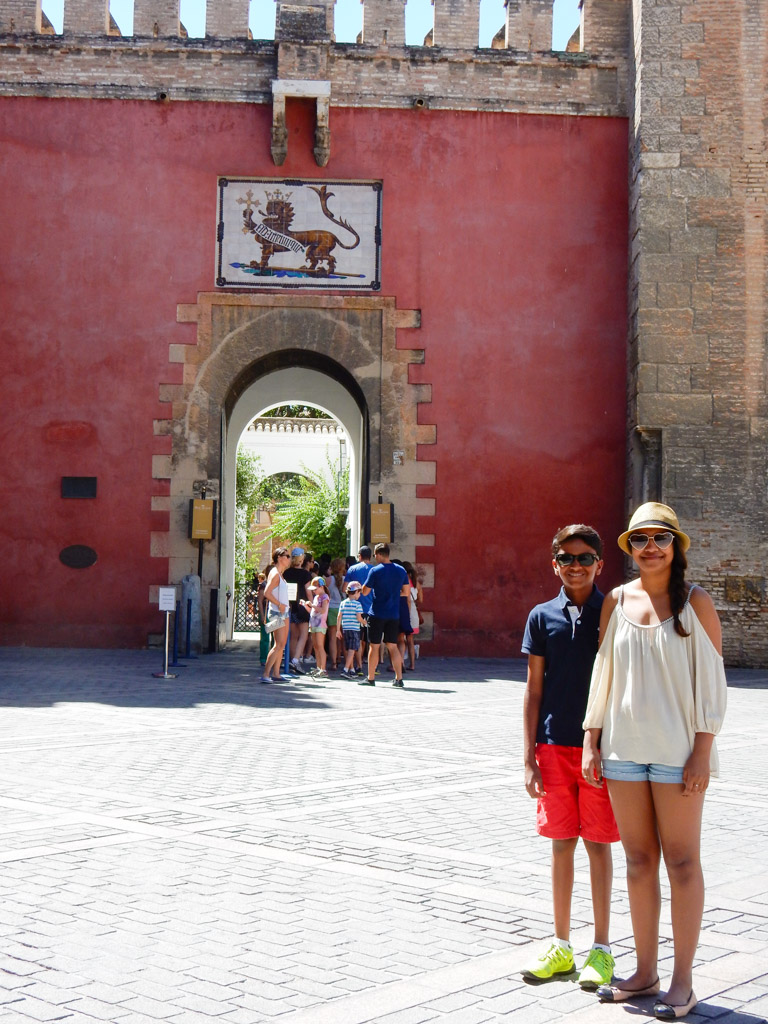
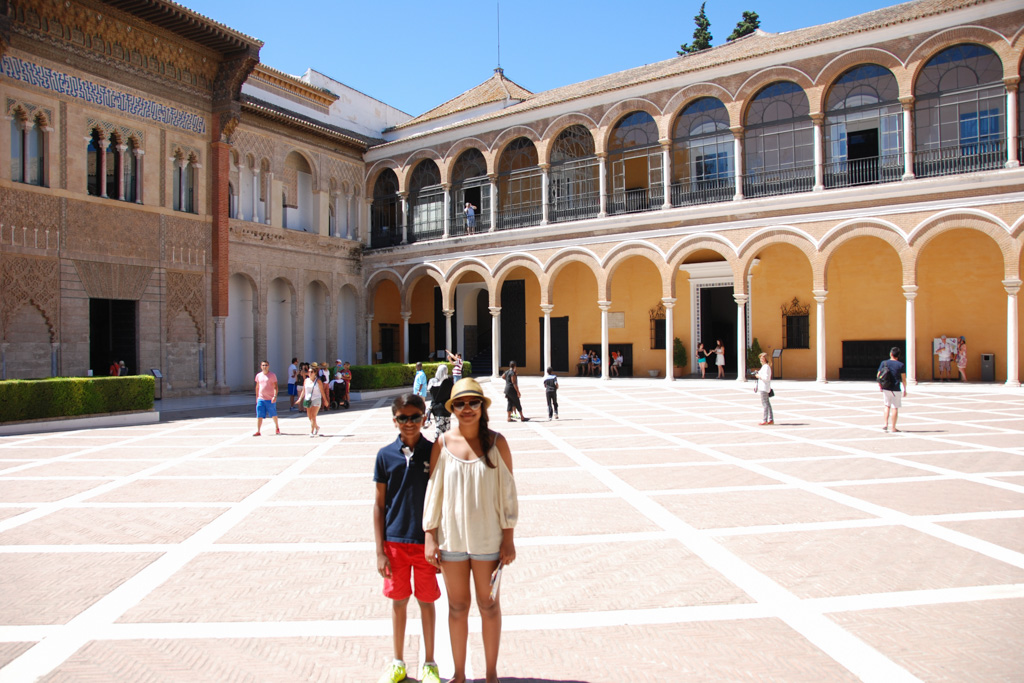
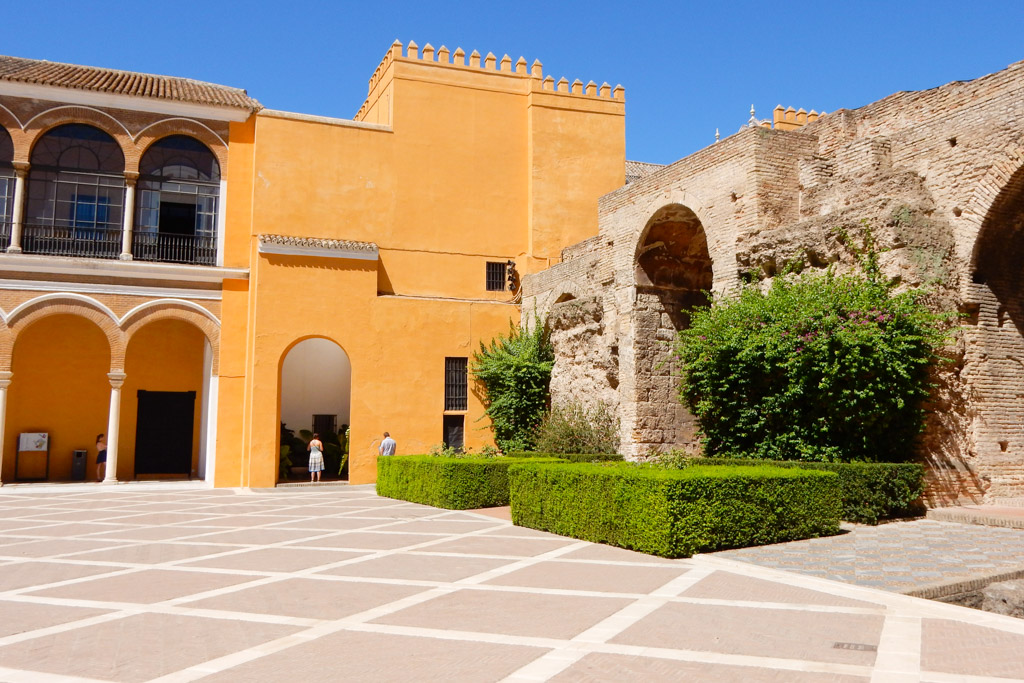
Mudejar Palace
The Mudejar Palace, also known as the Palacio del Rey Don Pedro, was built by Pedro I of Castile in 1364. He employed Jewish and Moorish workers and craftsmen from Seville, Granada and Toledo. The Palace was completed adding elements of other buildings, mainly from Cordoba, Granada.
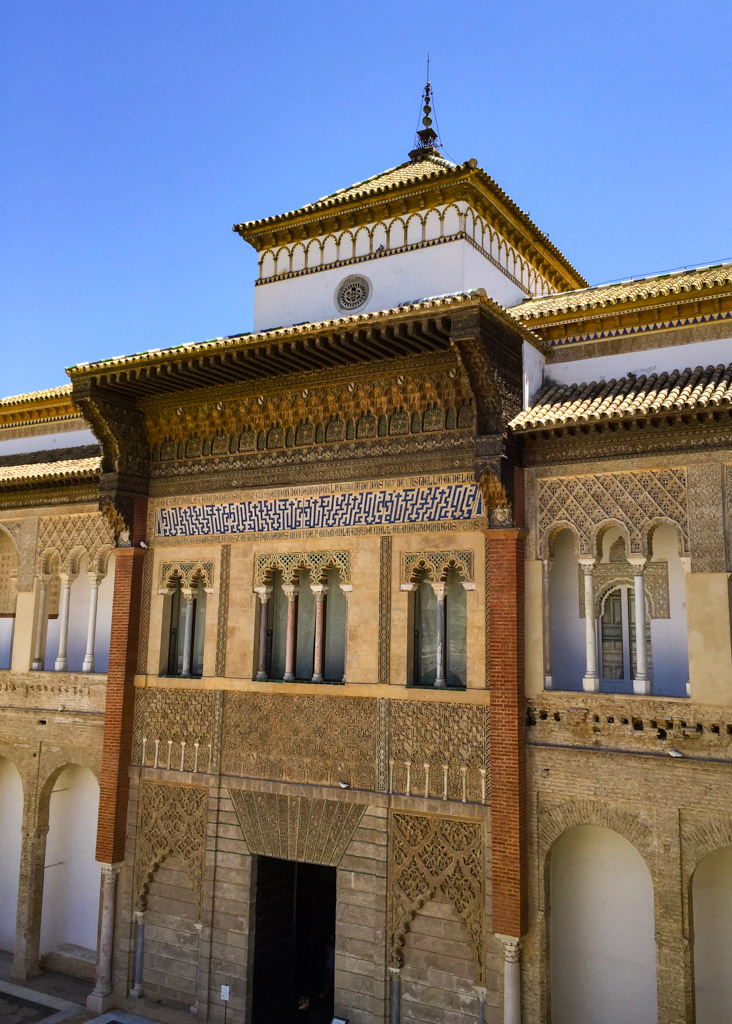
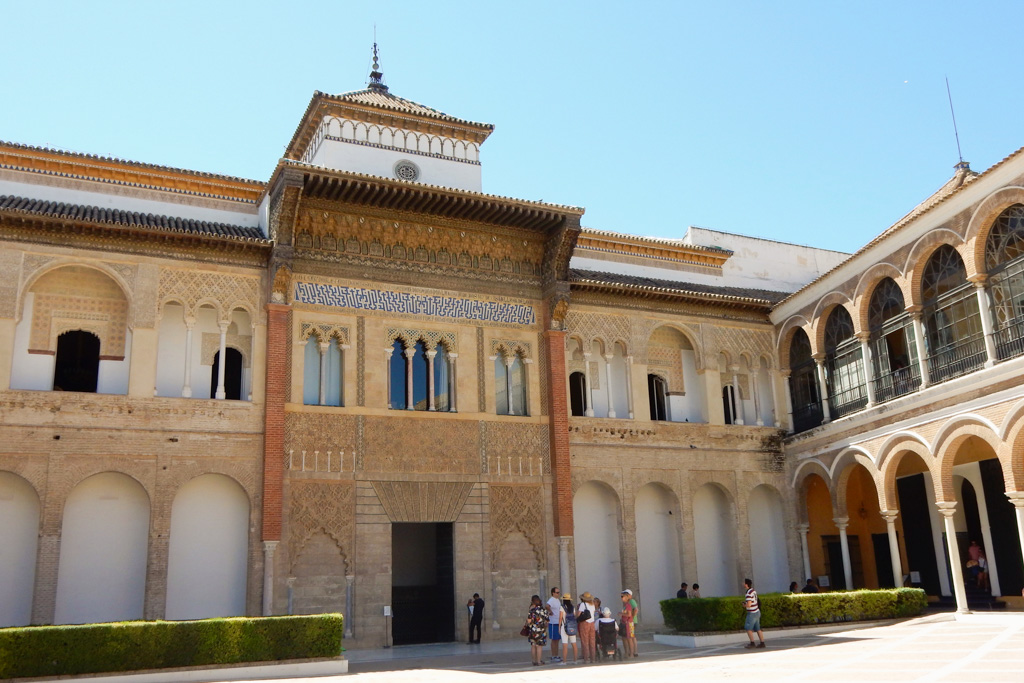
Further, into the Alcázar, Seville is the stunning Patio de las Doncellas or Courtyard of the Maidens, a rectangular courtyard containing a small fountain. It is based on an urban legend about the Muslim Moors demanding an annual gift of 100 virgin maidens from the Castile Kingdom. If the Castile Kingdom failed to provide this gift, the Moors threatened to conquer them. Though most likely untrue, it served as encouragement for the Christian Kingdoms to join together to reconquer the south of Spain.
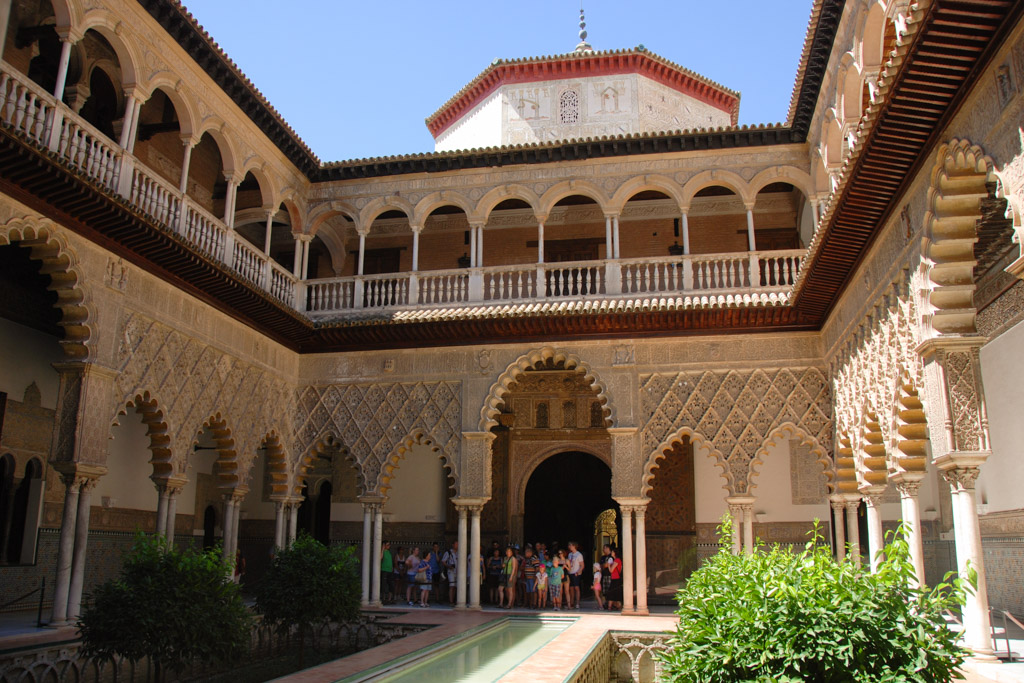
The courtyard has a reflective pool with sunken gardens on either side. The lower arches are a classic of the Mudejar style, with very thin columns and an impressive decoration at the top. The upper floor was added in the later 16th century (between 1540 and 1572) and it is easy to recognize the Renaissance style in it. Despite the differences, both elements end up creating a patio with amazing harmony. The arches have such elaborate carving that make it look like lace.
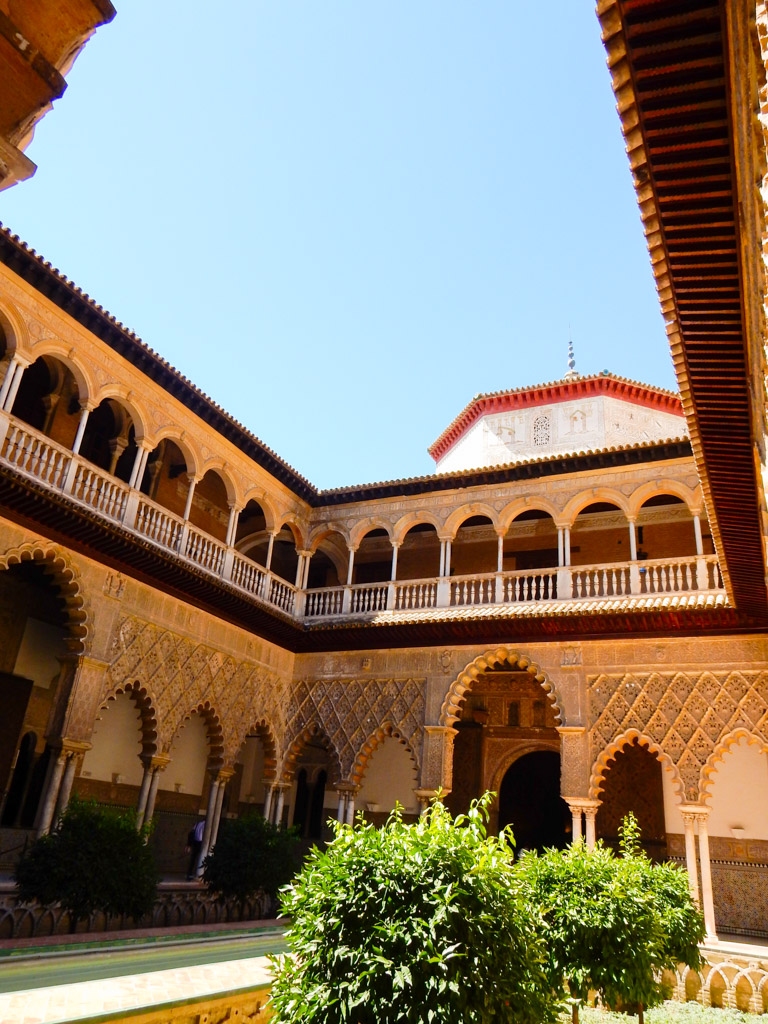
Don’t miss these three main rooms inside the Alcazar Seville: the Tapestry Room, the Chapel, and the Gothic Room (also known as the Feast Room). The Tapestry Room had to be built from scratch after the earthquake but the tapestries are Flemish, from the 16th century. The Chapel and Gothic Room have beautiful tiles that cover part of the walls.
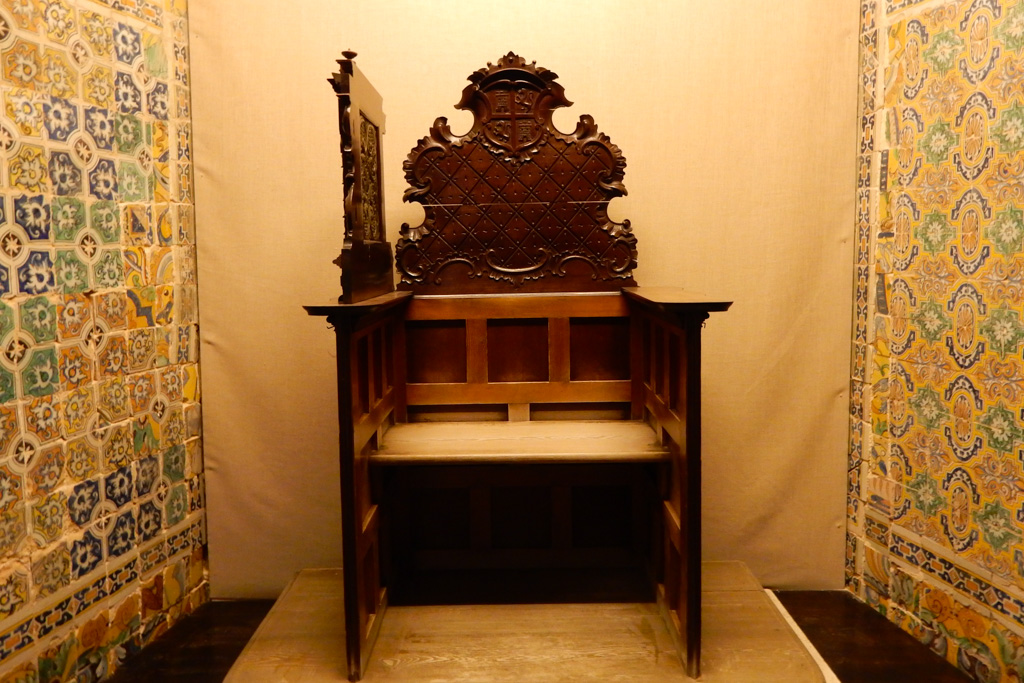
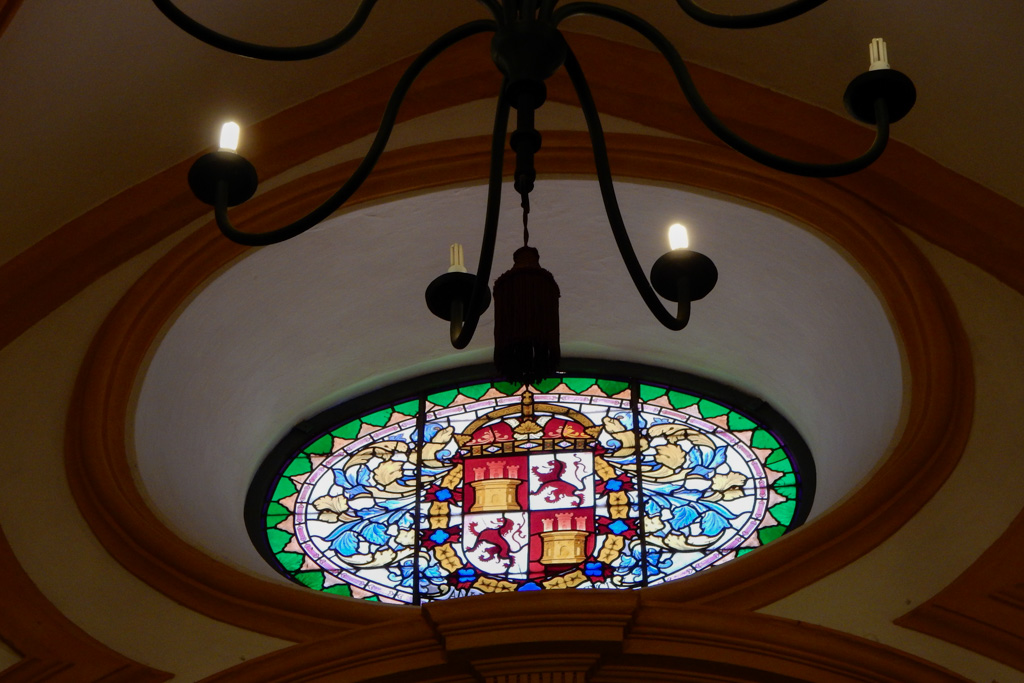
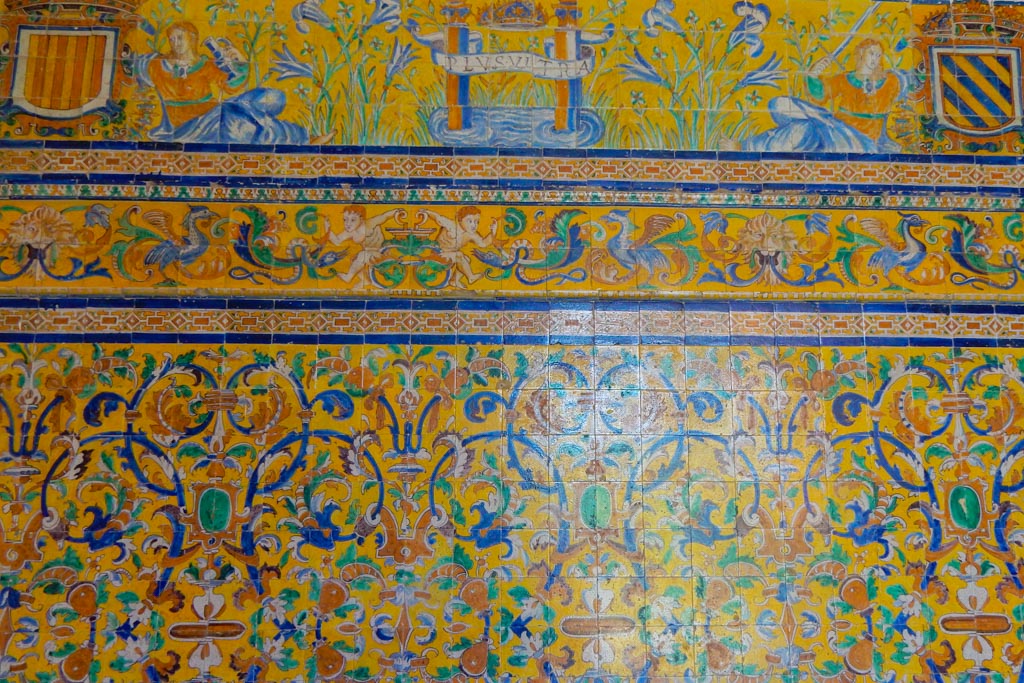
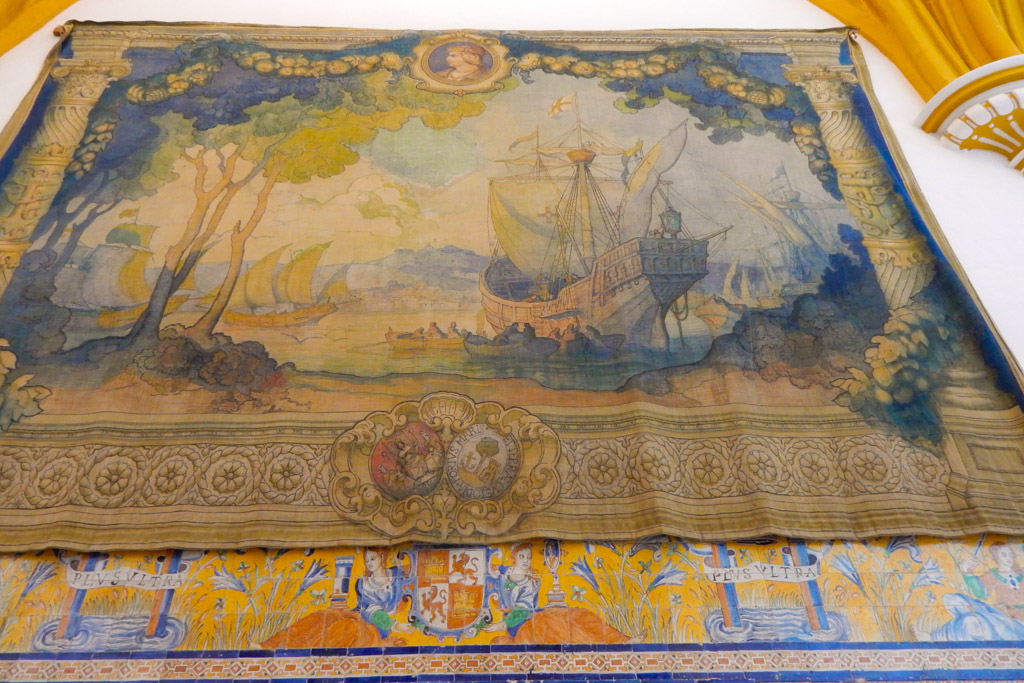
The courtroom, where the Catholic Monarchs — Isabel I of Castile and her husband Fernando II of Aragon, met Columbus after his second voyage, was transformed into a chapel where you can see a model of the ship.
Seville Alcazar Garden (Jardin de Estanque de Mercurio)
The Alcázar’s garden – Jardin de Estanque de Mercurio is green and lush and pays homage to the Roman god Mercury. Mercury is the patron saint of commerce, eloquence, communication, travelers, and luck. A statue of Mercury stands in the middle of a square pond in the garden. We walked through the beautiful gardens’ orange trees and bougainvillea.
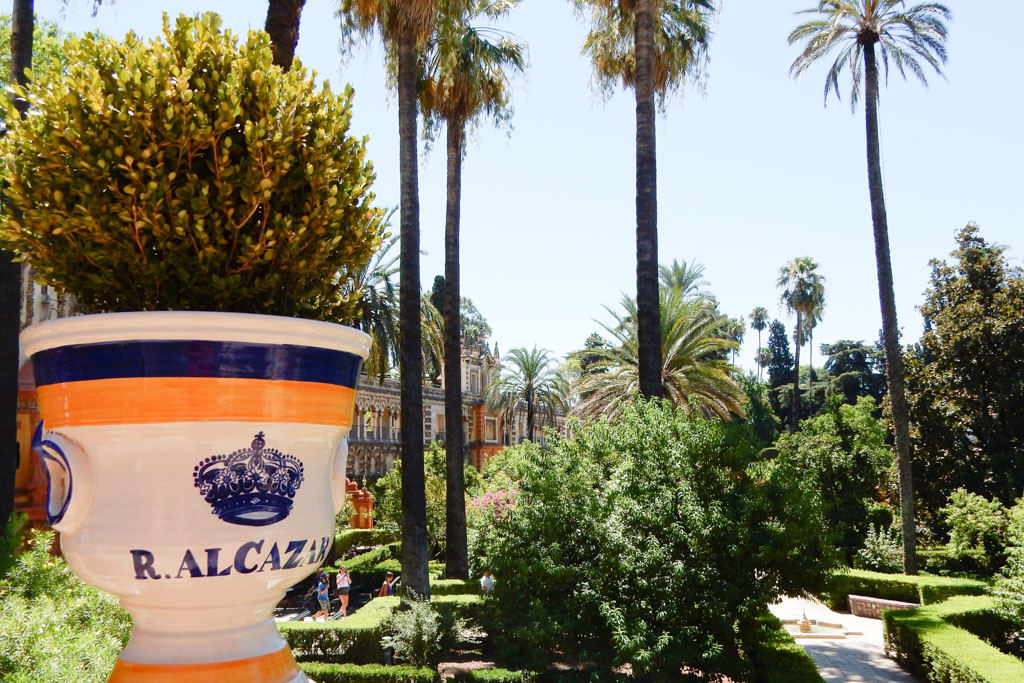
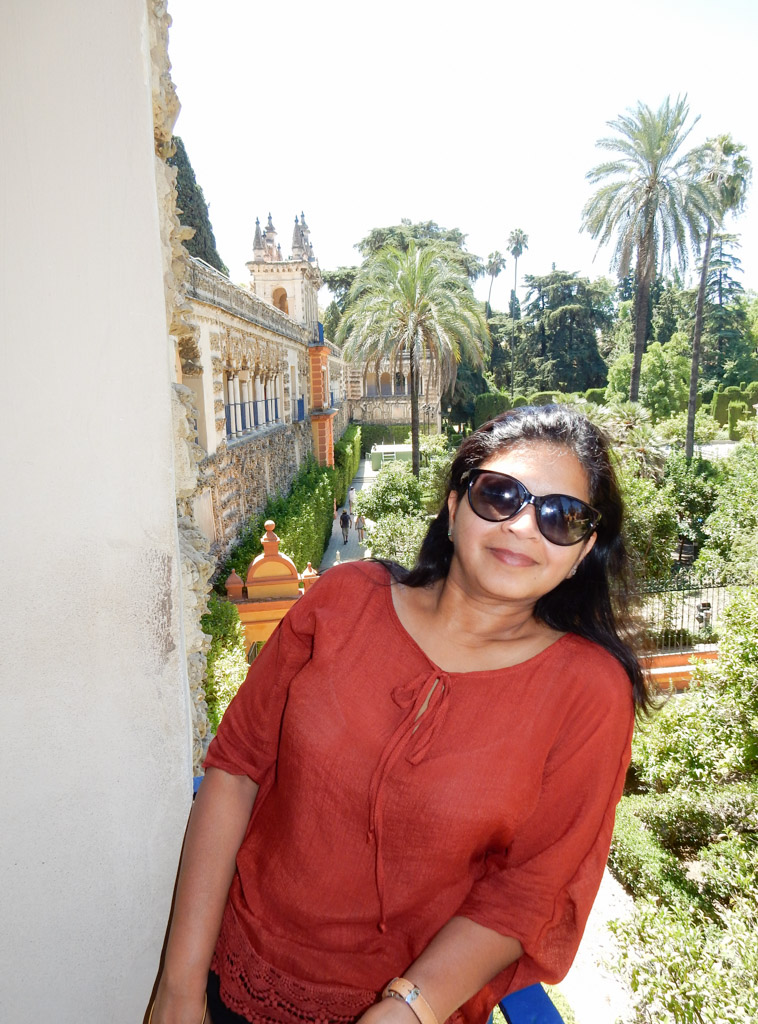
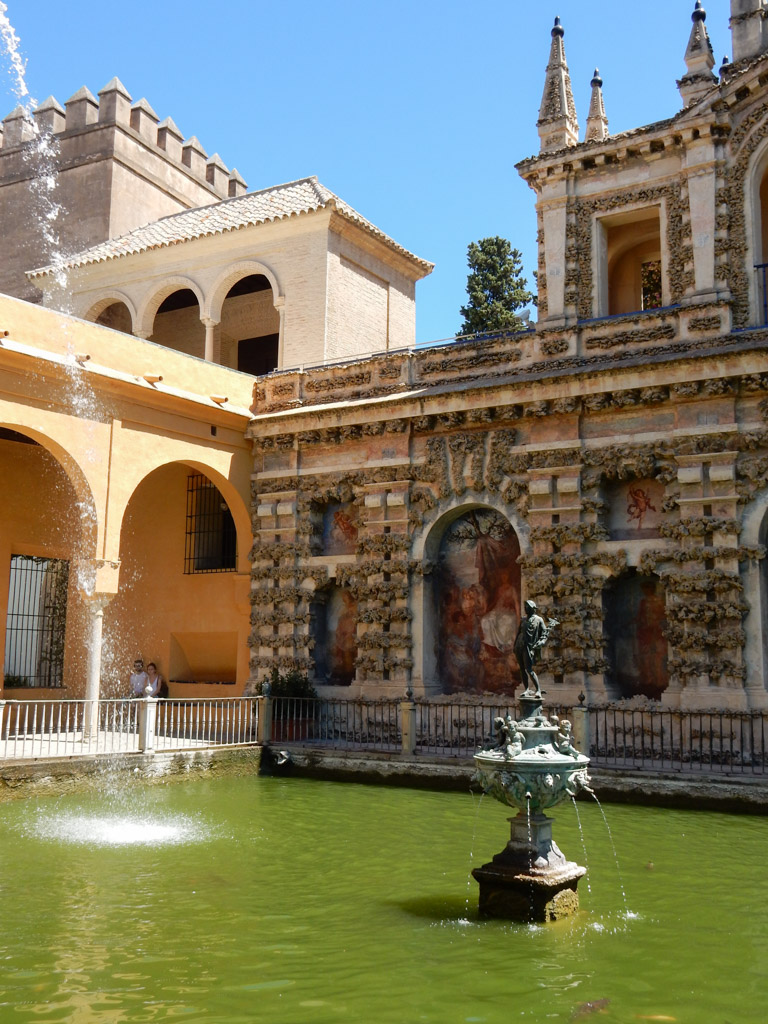
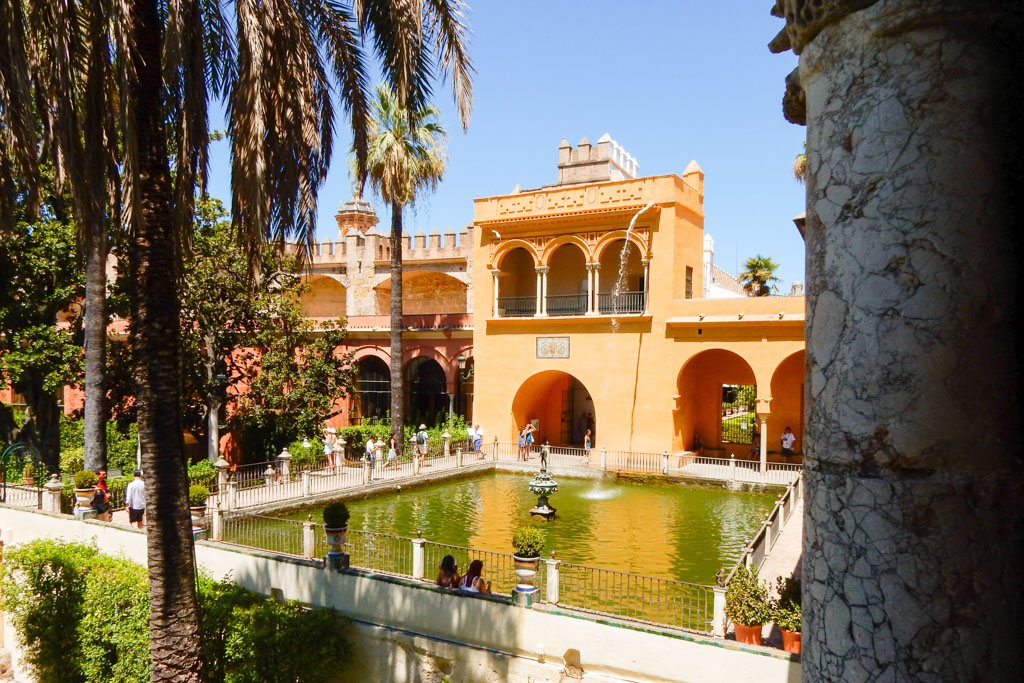
Maria de Padilla Bathrooms inside the Real Alcázar, Seville is another must-visit. Entering this underground passage you will find the coolest space of the whole palace, an ideal place for the summer period. It is located just below the Patio del Crucero.
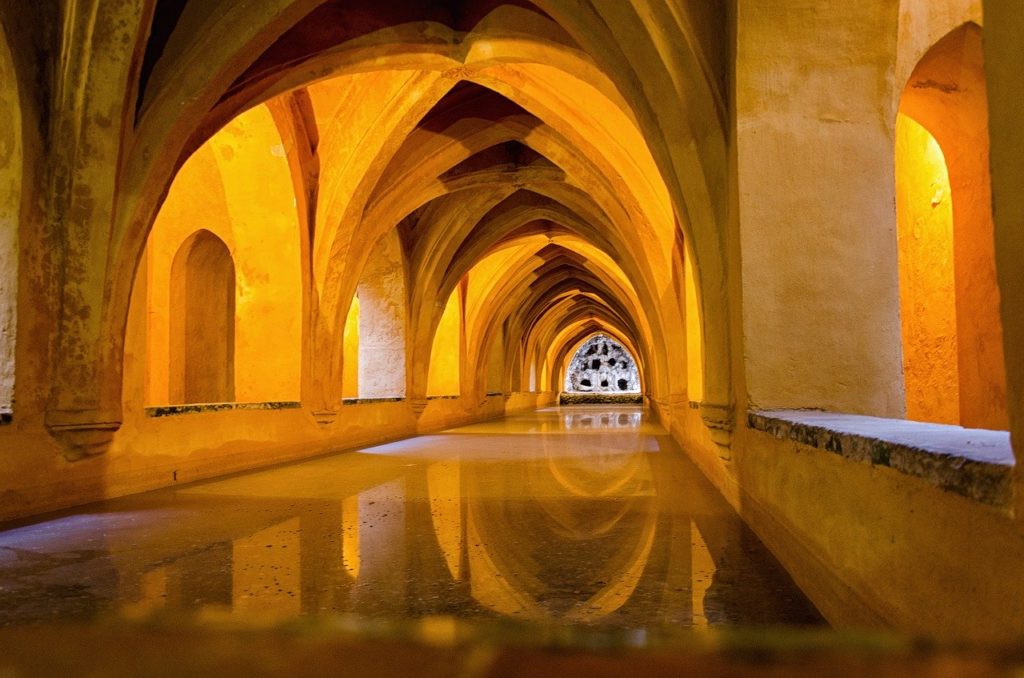
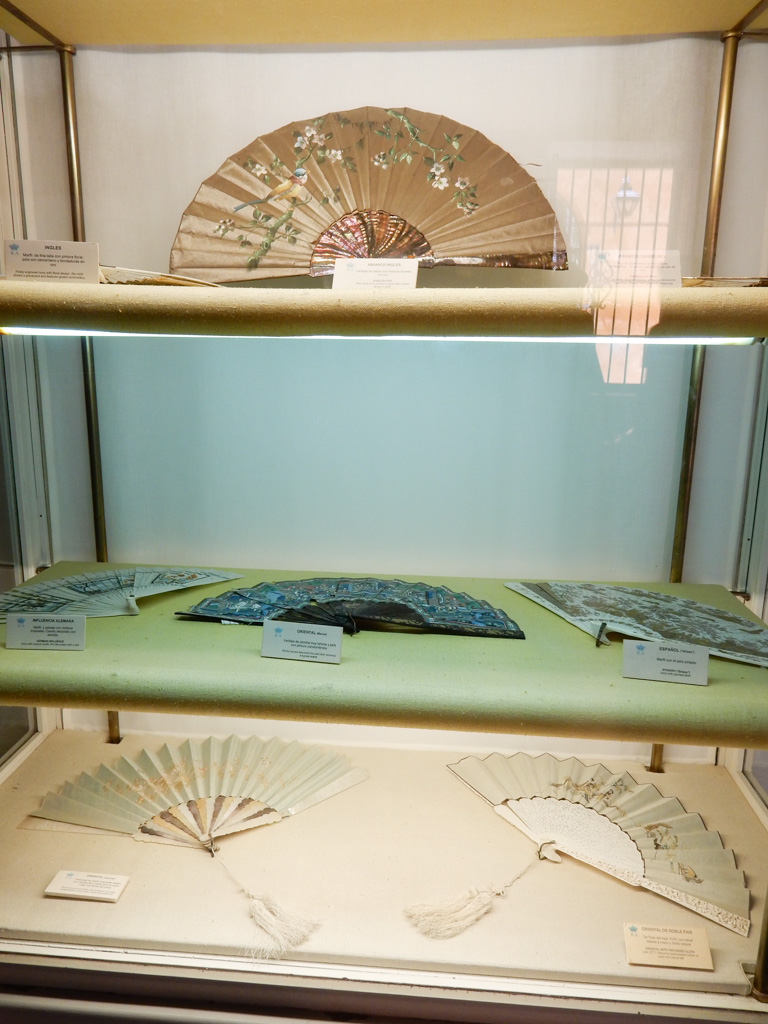
Christian and Muslim design elements
For the construction of the facade of his palace, Don Pedro, a Christian king, counted on Muslim craftsmen. They were called Mudejars and remained in a territory that was already of Christian rule. Islamic art was admired, even among members of other religions. Pedro I asked his friend the Nazari sultan of Granada Muhammad V, ruler of the Alhambra, to bring him the best artists who worked there. These artists created great work in which Christian and Muslim elements are combined – Islamic schematic decoration of Muslim taste mixed with shields of Castile, Leon and the Order of the Band, alluding to King Don Pedro.
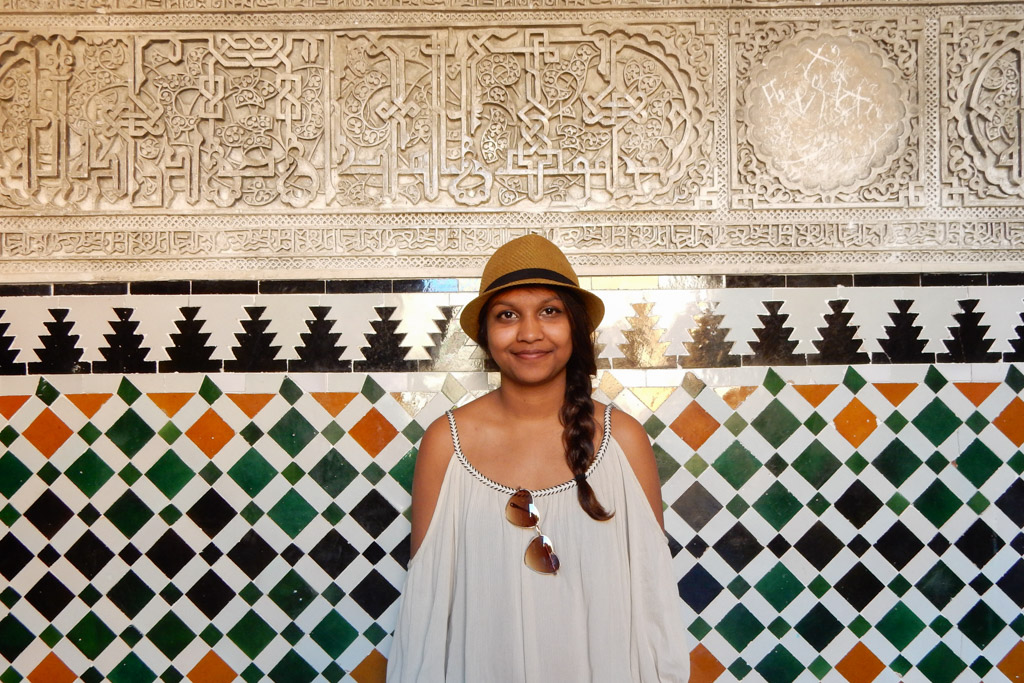
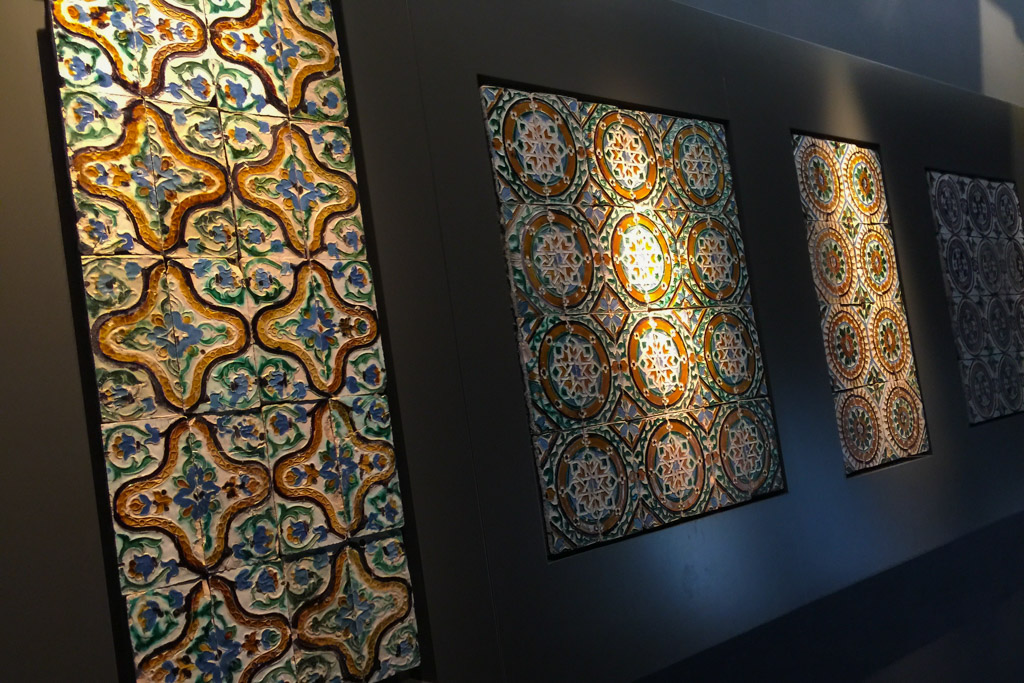
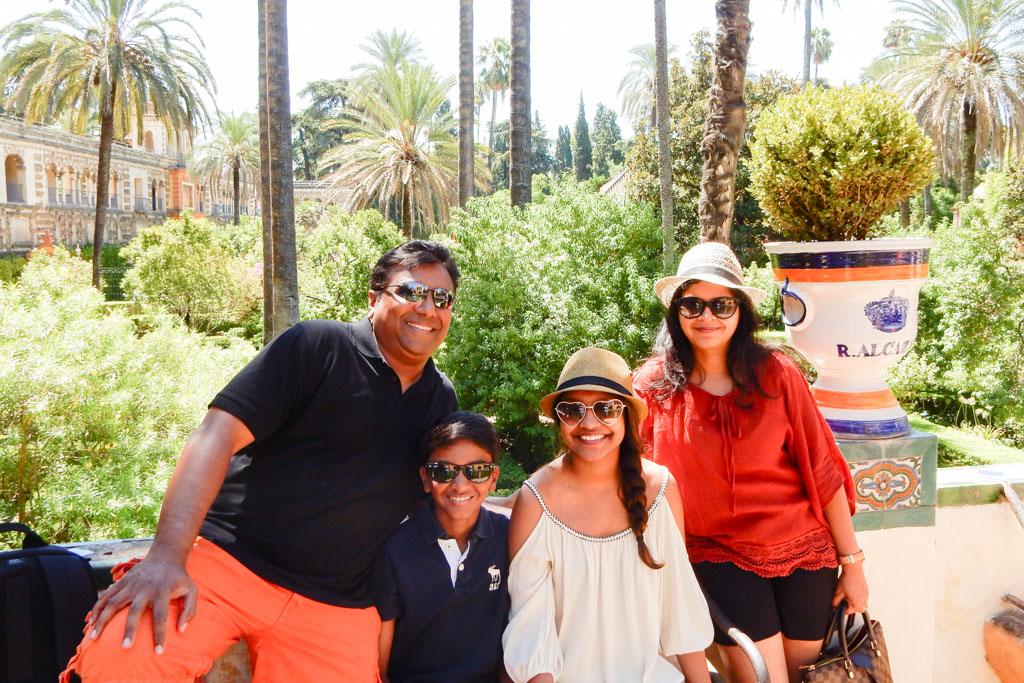
Lunch at Santa Cruz Neighborhood
After visiting the Alcazar we went to Santa Cruz for lunch. Barrio de Santa Cruz was once a Jewish quarter and now is a perfect place to get to know the Seville. A labyrinth of alleyways, white-washed housing, restaurants and boutiques, this area is definitely the highlight of the city. We strolled along its narrow streets and found a wonderful restaurant to linger and taste the tapas, gazpacho and sherry.
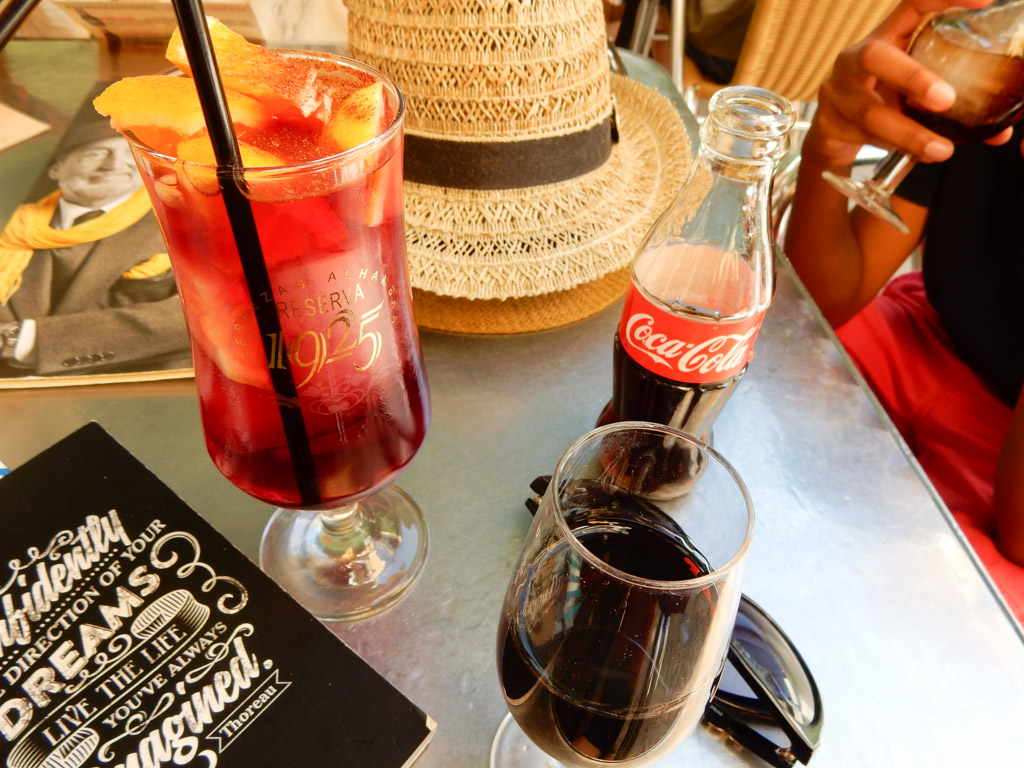
Tips and Information for Visiting the Alcazar in Seville
Real Alcázar was designated a UNESCO World Heritage Site. Not only has it been beautifully maintained for centuries it is also the oldest royal palace still in use. The upper floors of the Alcázar serve as the official residence of the Spanish Royal Family when they are in the city.
Website: The Royal Alcázar of Seville
Address: Plaza del Triunfo, s/n 41004 – Sevilla
Entrance: General ticket: 9.50 €, Reduced ticket: 2 € (Seniors, Students from 17 to 25), Free (Under 16, Residents in Seville, Disabled and an escort)
Plaza de España is located near the Maria Luisa Park on Glorieta San Diego, Avenida
Paddleboat around the canal fare: 35€ for 35 minutes. 4 people per boat. You can go up the tower and visit the plaza for free. We loved it here during sunset.
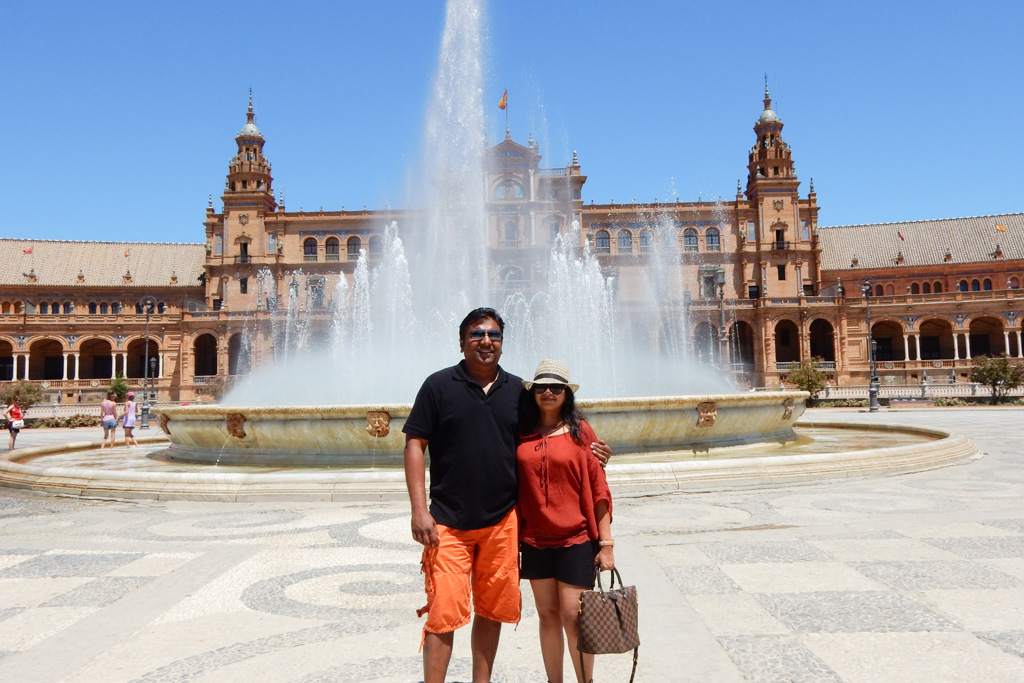
We visited Alcazar Seville and Plaza de Espana at end of July and it was pretty hot, our kids were a little exhausted from the heat – visiting during Spring break or earlier in Summer might be better with kids.
Other places to add your Seville Itinerary
Inside Seville’s massive cathedral stands a monument to Christopher Columbus. Climb up the winding ramp that takes you up 35 floors to the top of the Giralda.
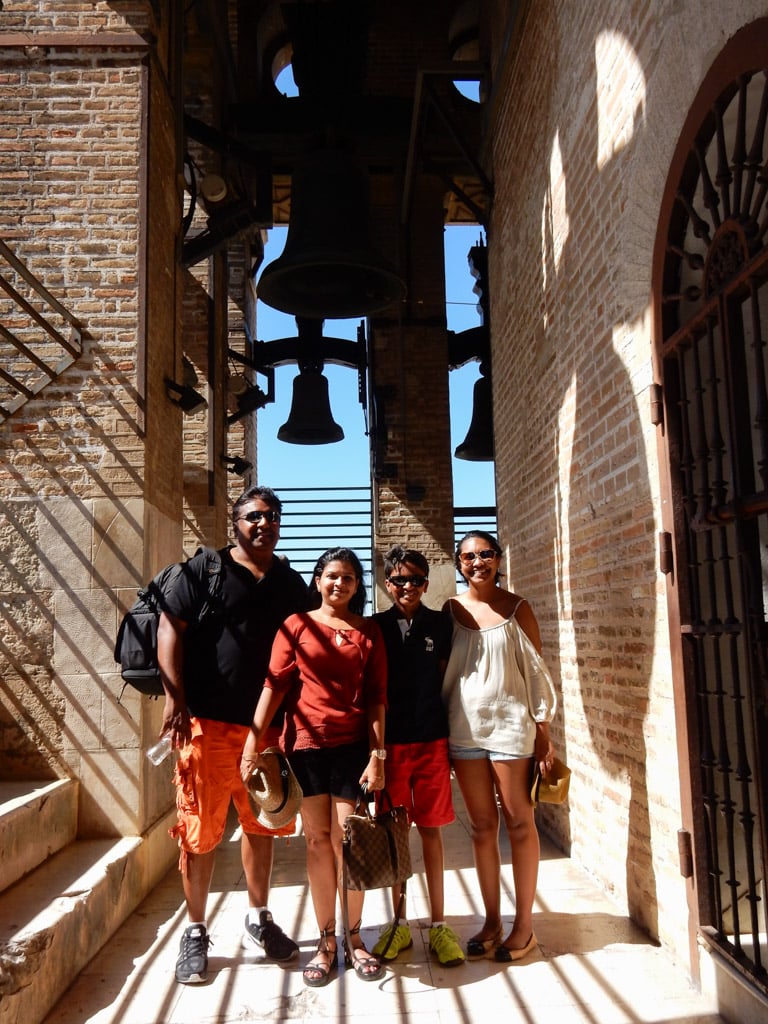
Torre del Oro (Tower of Gold) is a historic watchtower that was built in the early thirteenth century by the Almohades, who ruled over Andalusia.
Catch a Flamenco show – Casa del Flamenco was absolutely gorgeous, set in an Andalusian patio in the charming Santa Cruz neighborhood.
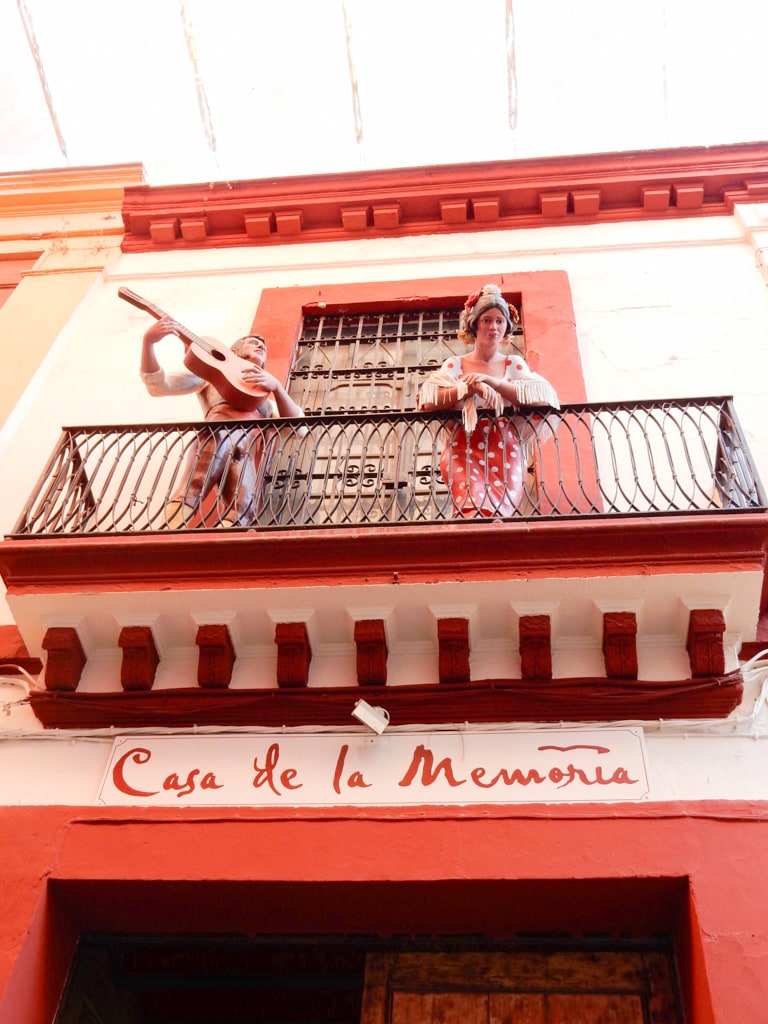
After a flamenco show stop to catch a sunset view from the top of the wooden mushroom Parasol. In the Old Quarter of Sevilla amidst historic and beautiful buildings, sits the gigantic, modern interpretation of wooden mushrooms. Offers the second-best rooftop view in Seville. The basement floor houses a museum of ancient Roman and Moorish artifacts.
Stop at Seville’s Museo de Bellas Artes to see the Spanish art.
Enjoy Cocktails at EME Catedral Hotel rooftop. Best view in town!
Seville Tours
Souvenir Shopping in Seville
Abanicos – the intricate Andalucían fans, are not just for flamenco dancers, it is a necessity when in Andalucía, the region is so hot this beautiful fan comes in handy. We got a couple to stave off the summer heat and as souvenirs for friends. The best espadrille shoes can also be found in Seville.
You might also like:
Top things to do in Barcelona with kids
One day in Cordoba
Southern Spain Itinerary
Road trip through the White villages of Andalucia
Other posts from Spain
PIN IT FOR LATER
Have you been to Andalucia? Tell us about your experiences and recommendations.
Note: This post may contain affiliate links, partnership or sponsored content. If you purchase an item via one of these links, we may receive a small commission at no extra charge to you. But as always images and opinions are our own. For more information on our affiliates and privacy policy at Outside Suburbia see here.
CONNECT WITH US

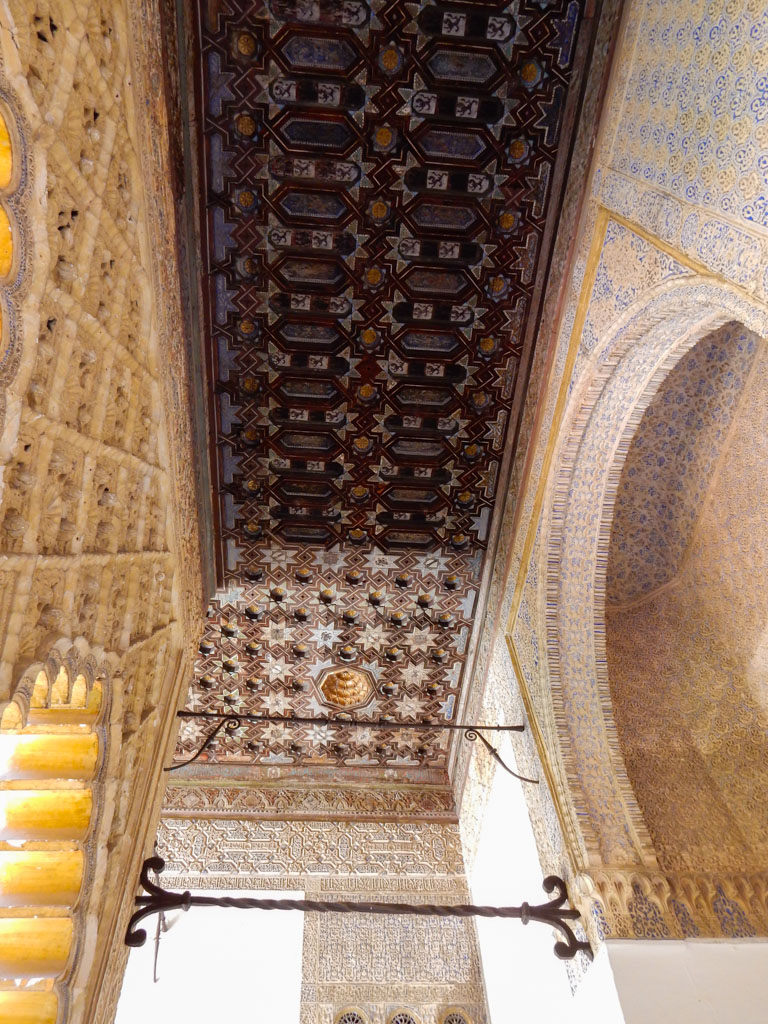
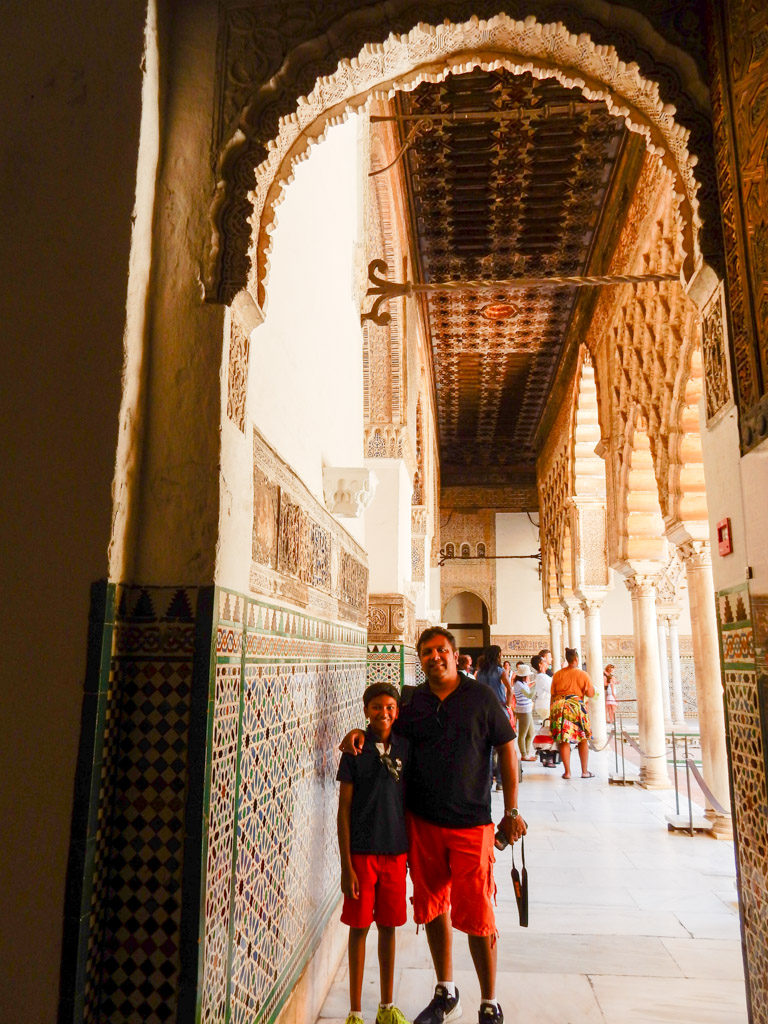
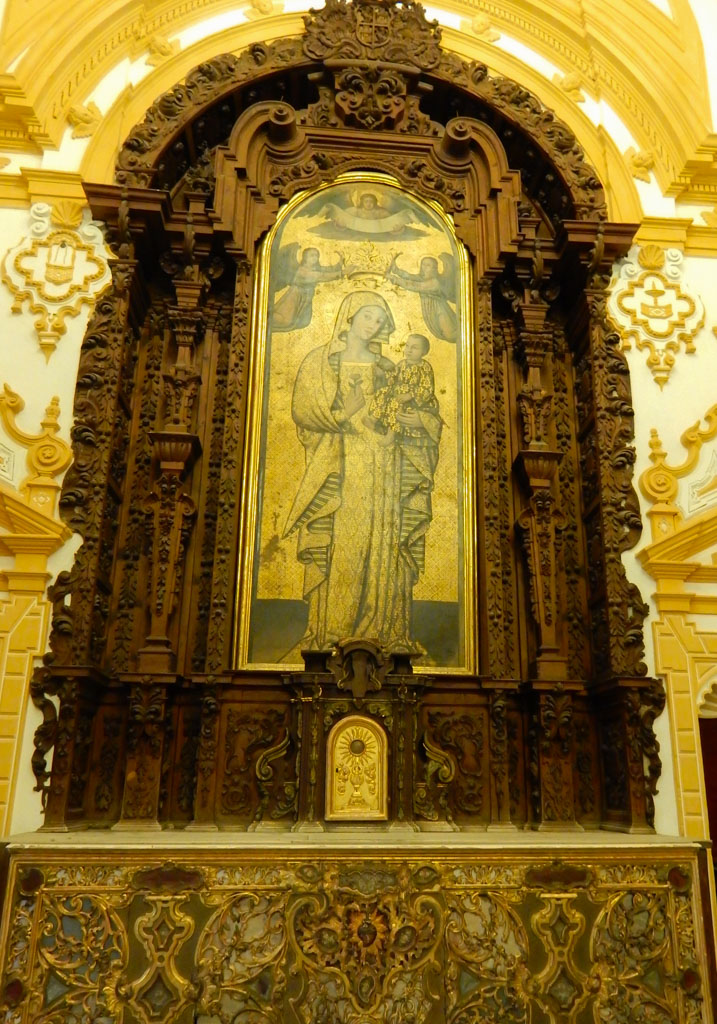
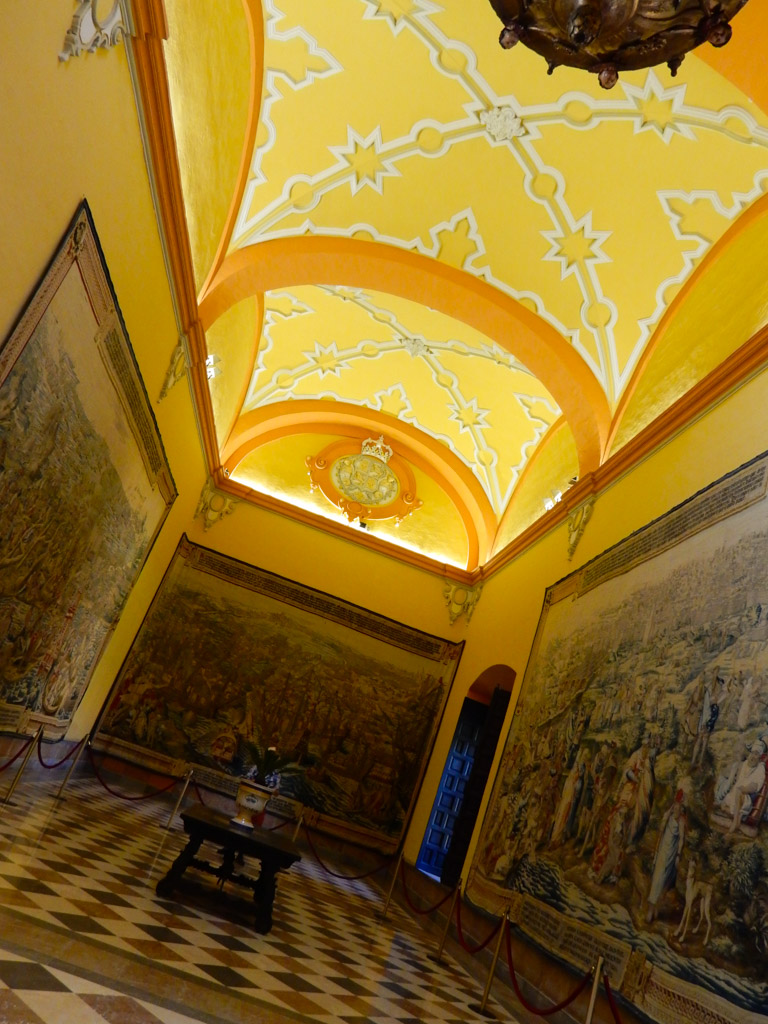
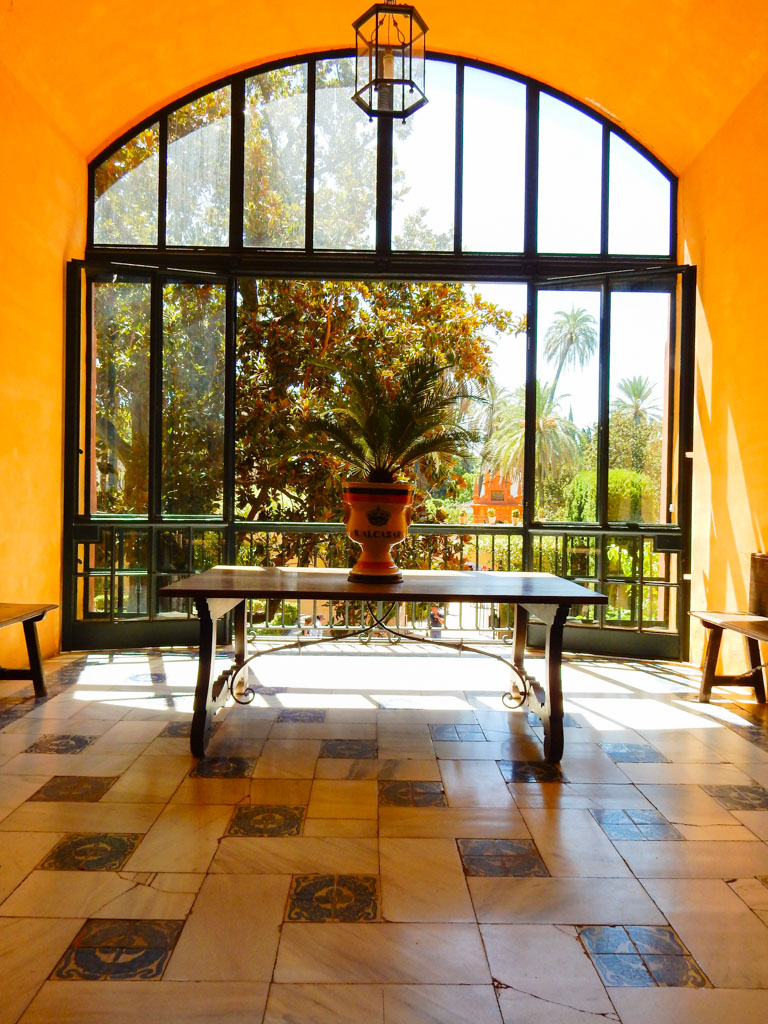
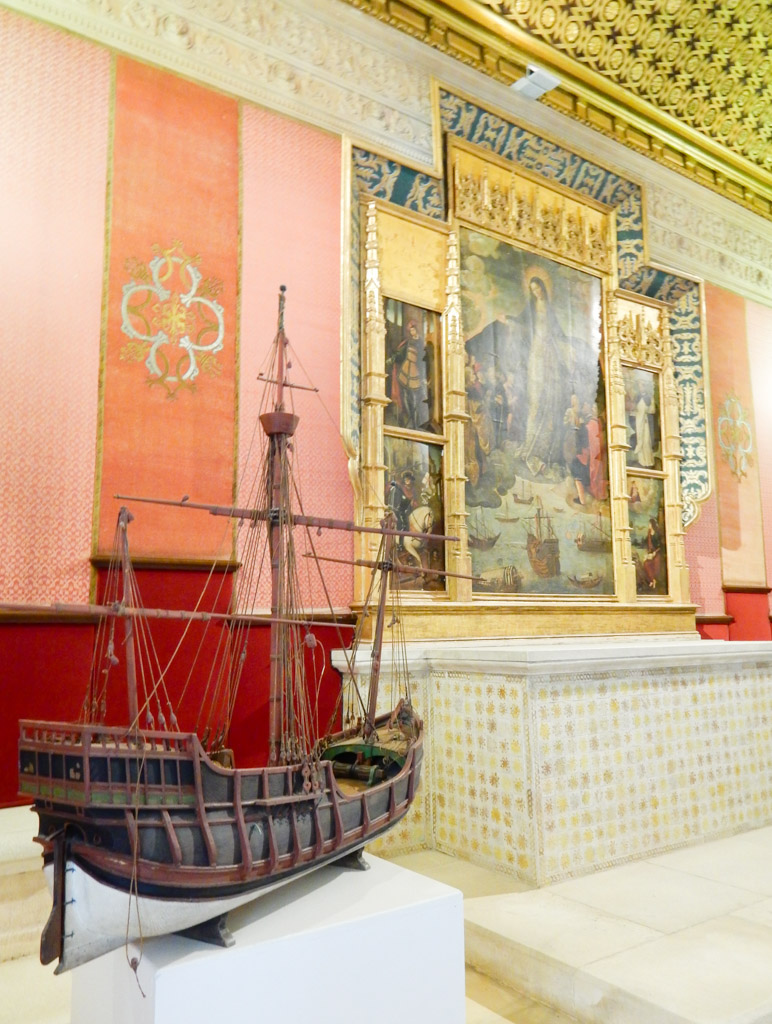
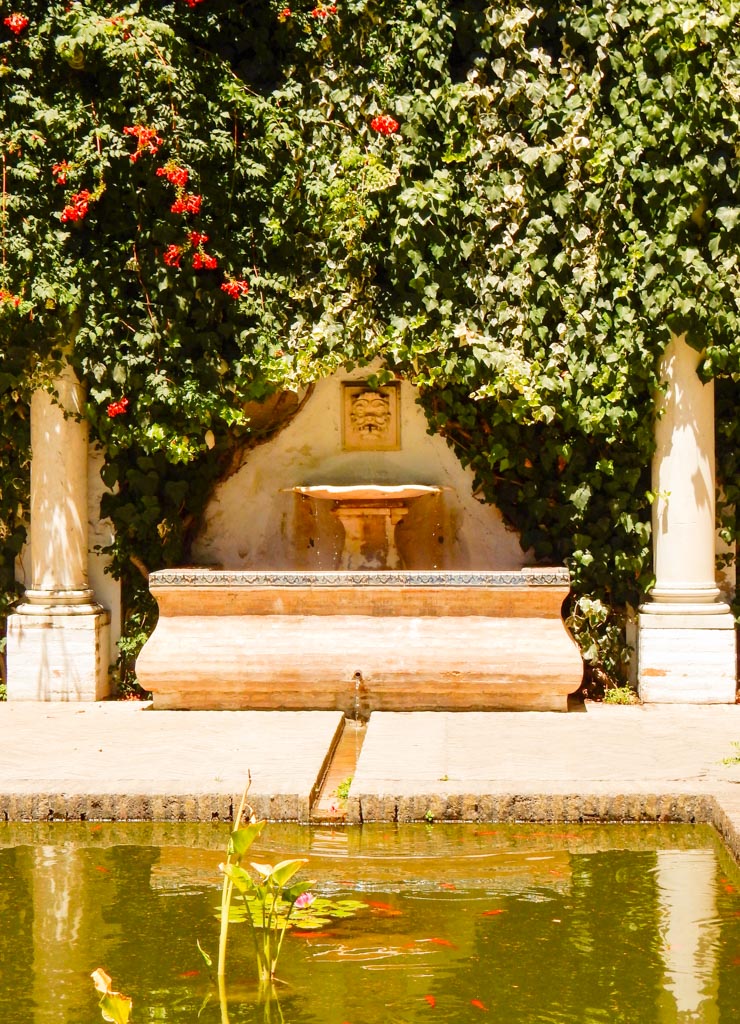
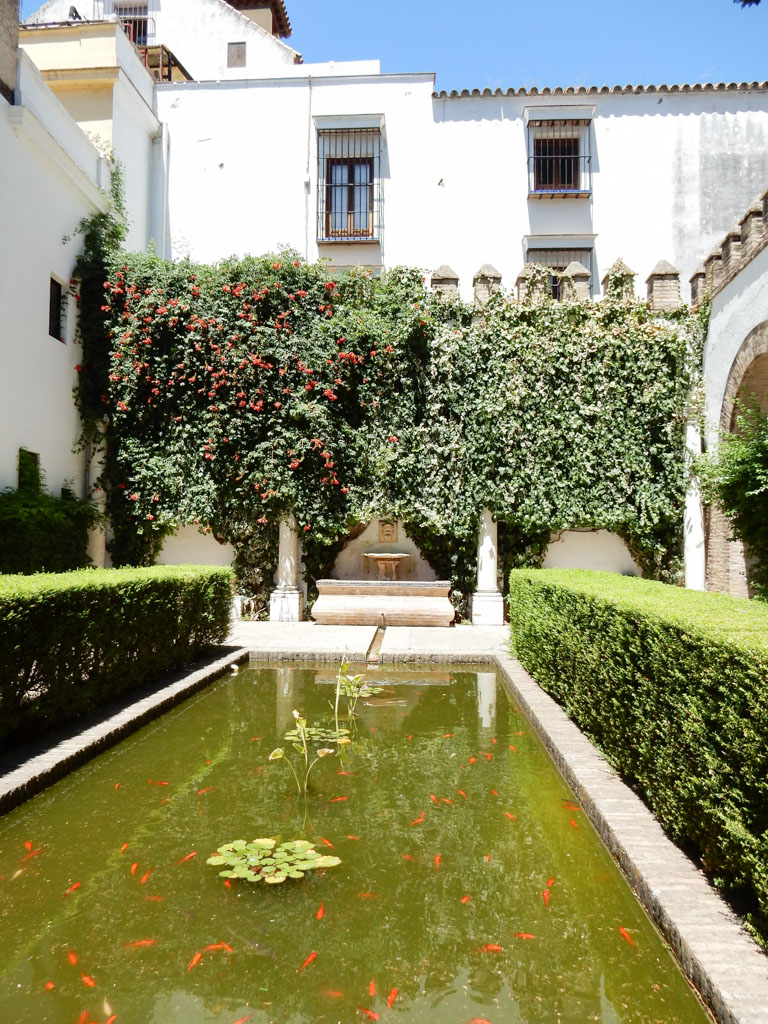
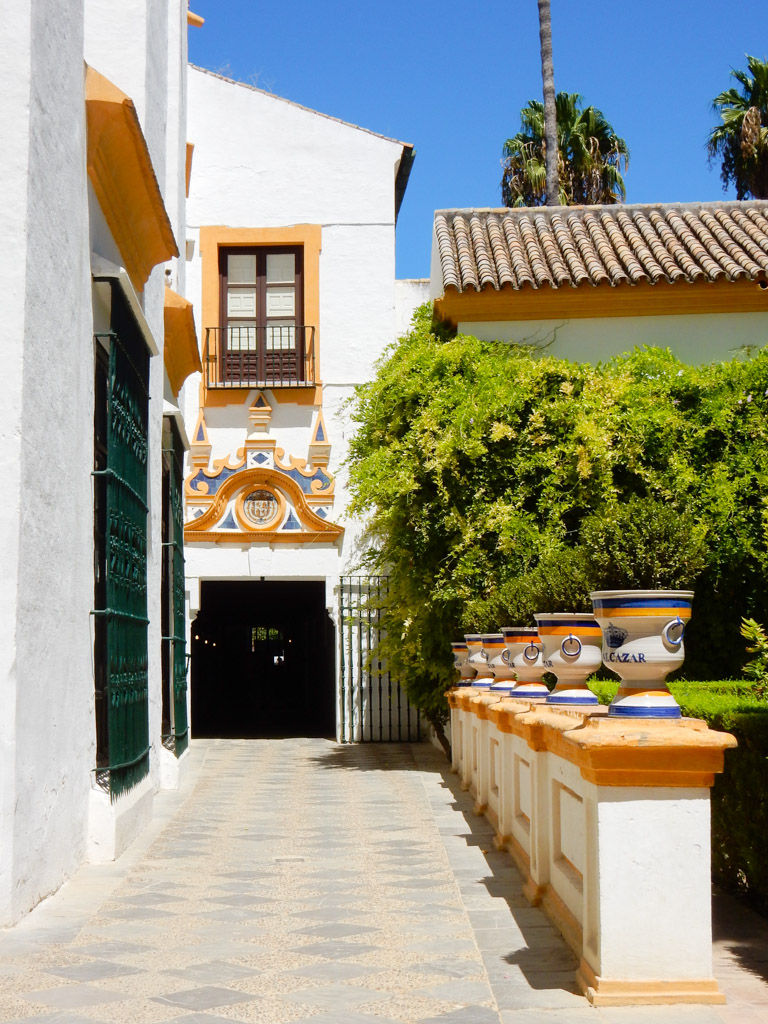
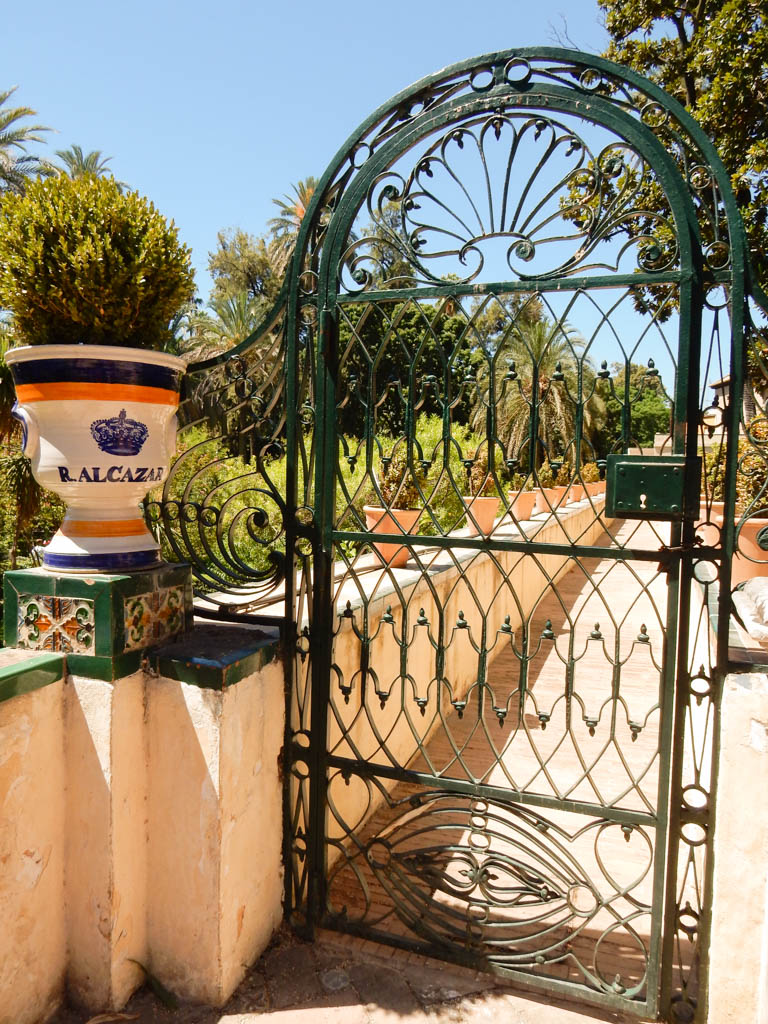
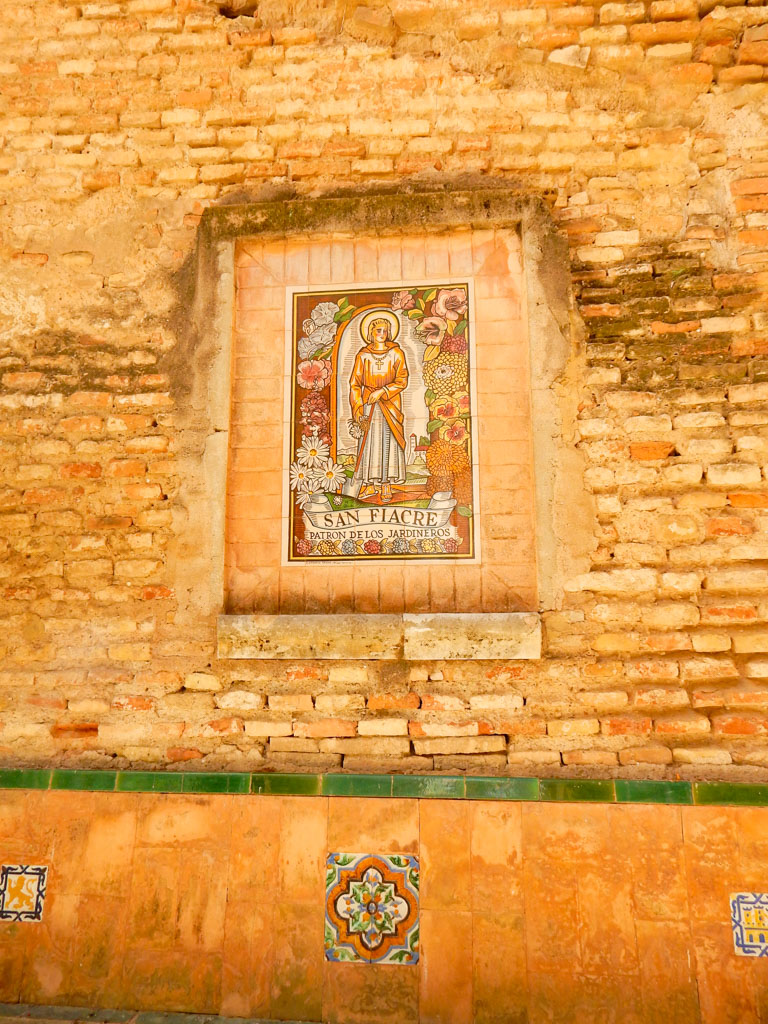
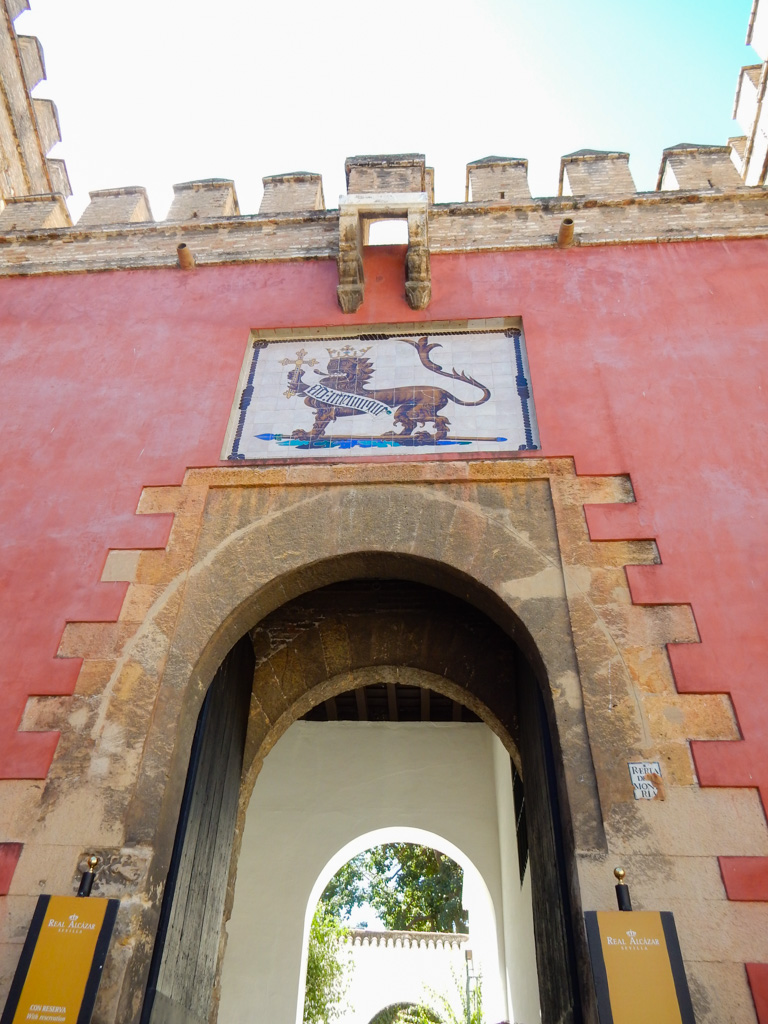
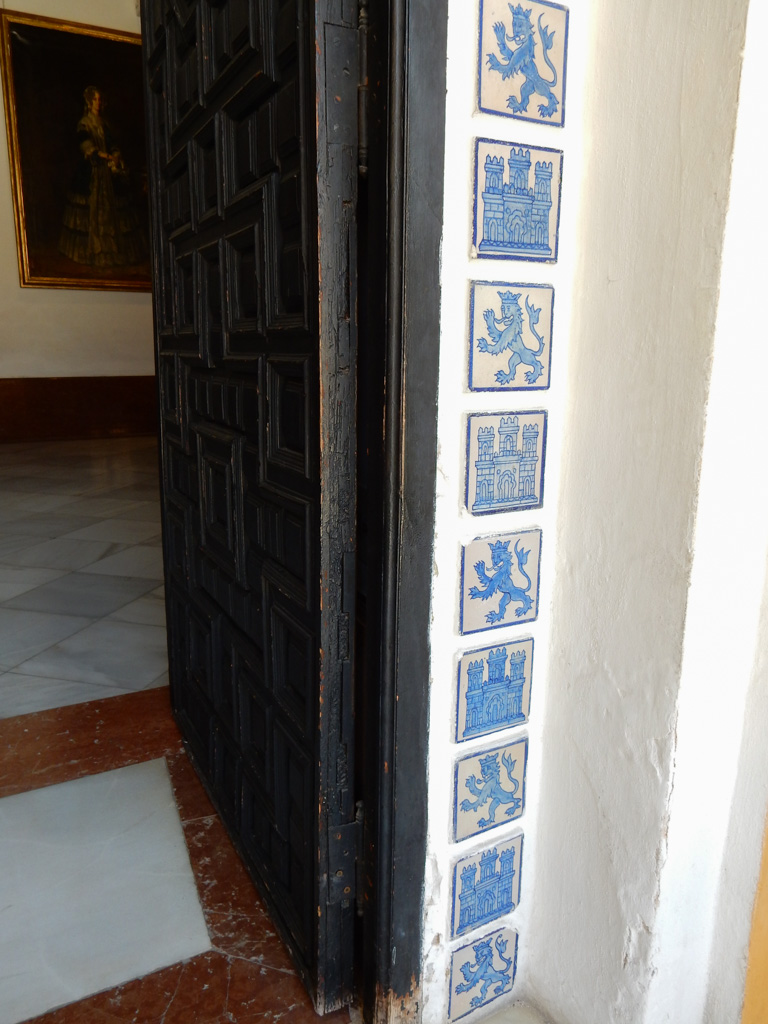
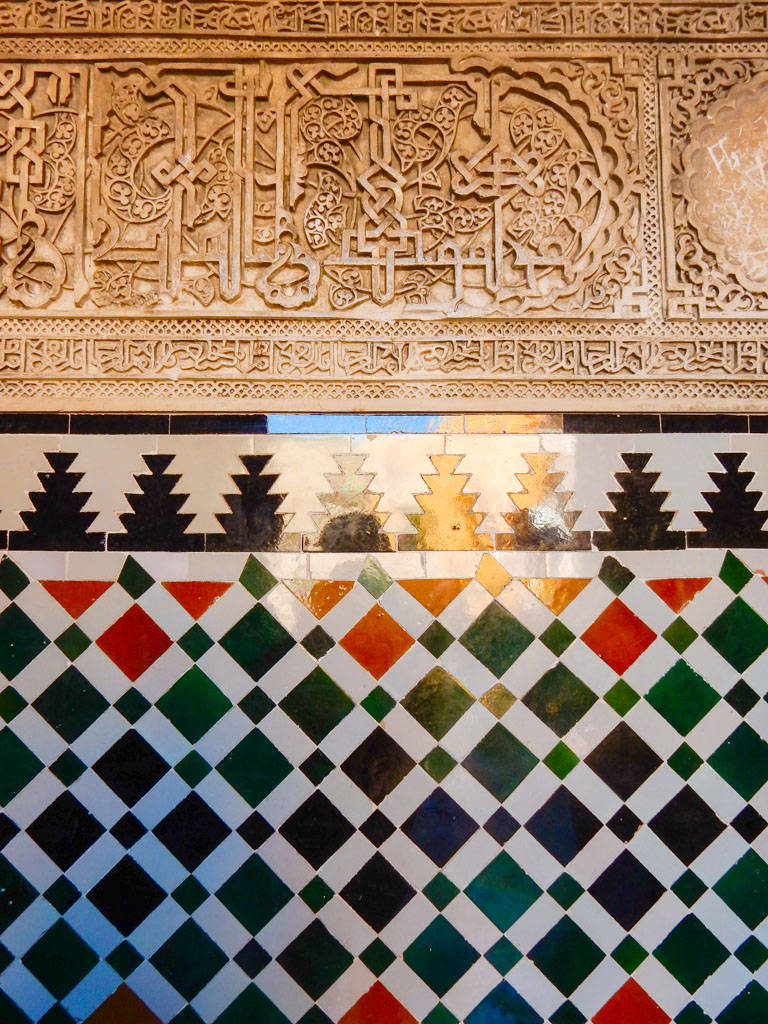
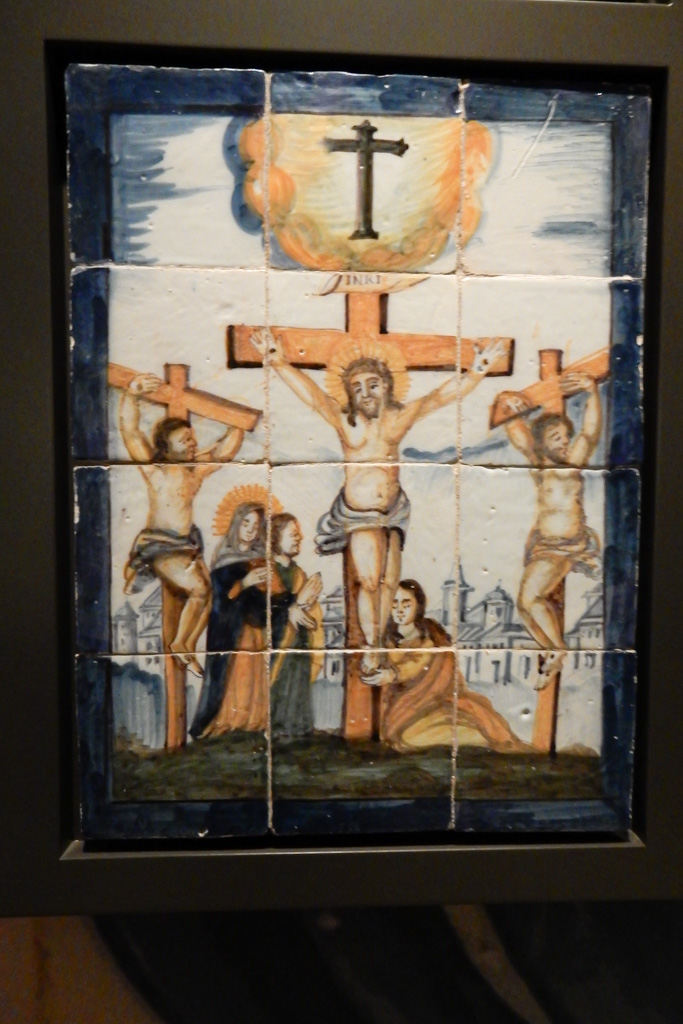
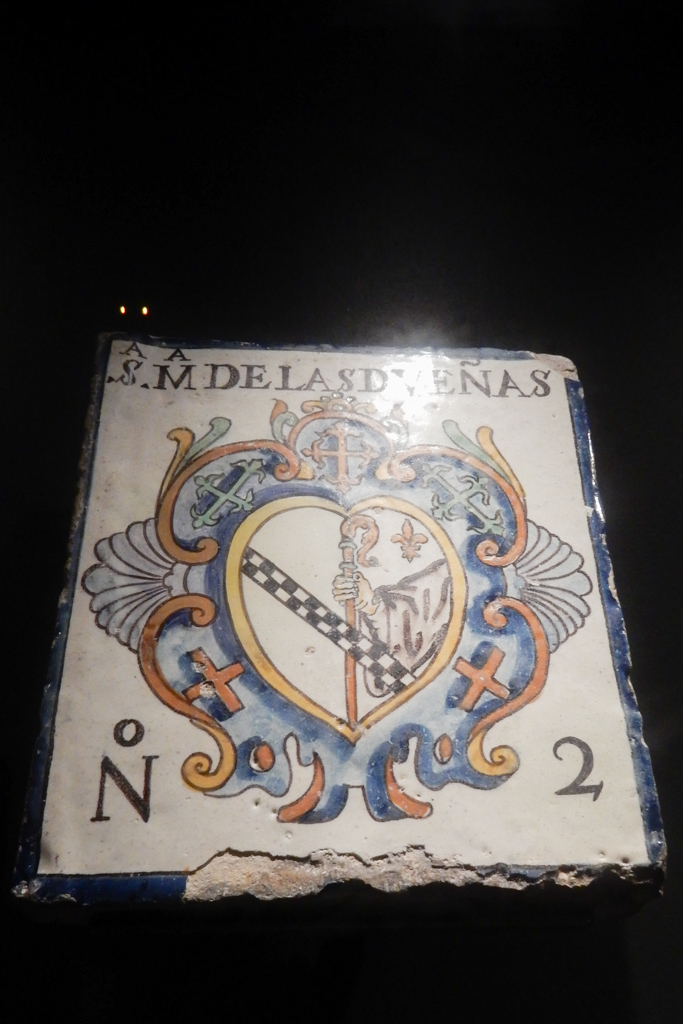
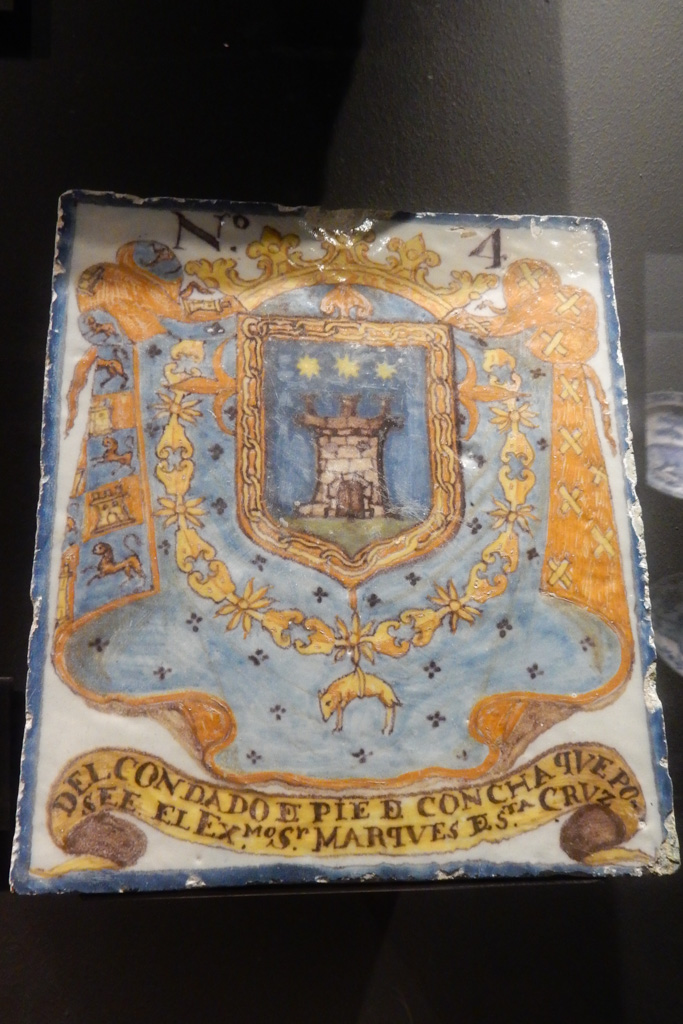
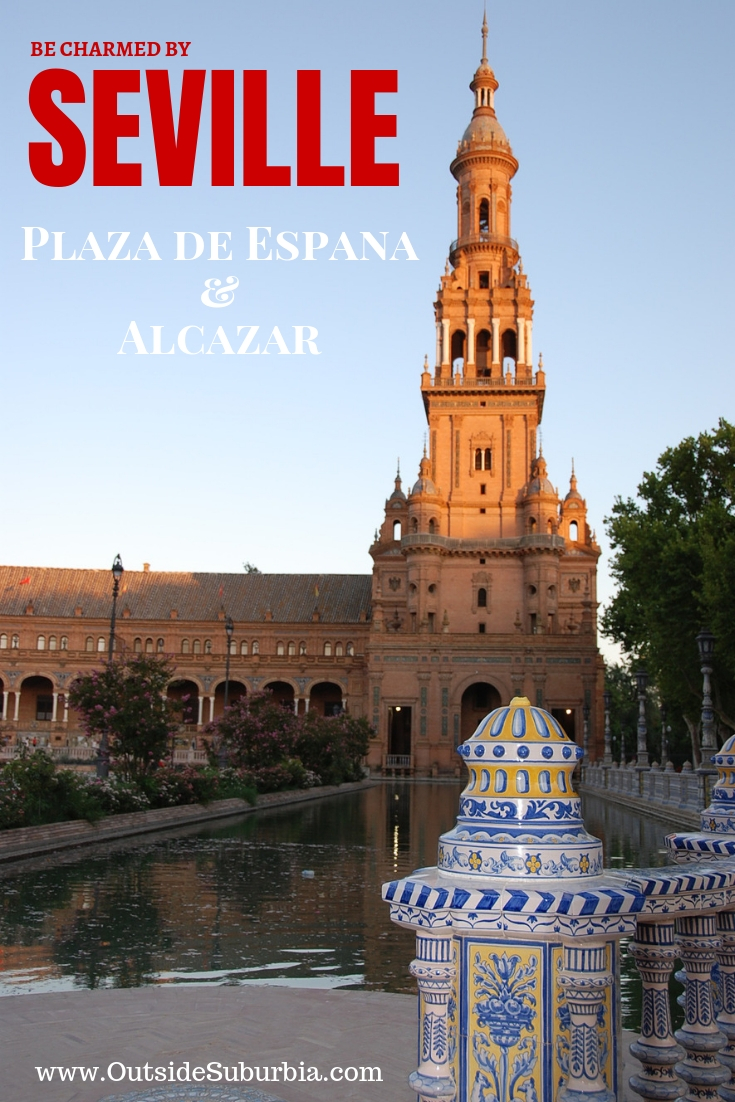
Wow – such beautiful shots and lovely architecture.
We were in Cadiz in the summer and loved it, I would have really liked to have travelled in to Seville though and I can see I’m going to have to make it there, it looks beautiful! Thank you for linking up to #GlobalKids 🙂
I am enjoying following your trip. These places are definitely on my bucket list!
Thanks Salma!
I’m yet to visit Seville but that tile work is incredible and you’ve really made me want to visit
Suze – Thanks was stopping by, The tile works especially at Plaza de Espana was beautiful!
I’ve always heard of great things of Seville. And every time I see a post about it, I want to go! And the colors is always so beautiful, that’s a huge reason why I always want to visit Seville and Spain in general. Now I want to go once again lol Great post, it’s truly a beautiful place!
Your photos are amazing and also, you have done you homework! Great post 🙂 I love Spain!
Thanks Ana!
Love those frescoes and detailed wall art.
One word: gorgeous! The details are incredible in here. I am going to Spain next week but not going to visit Sevilla. I would have to wait for another trip to visit the city.
What a beautiful place is Seville. I love the tiles and mosaic.
Wow Privin – Seville looks so gorgeous. Great photos you’ve posted. I fancy some of those lovely tiles for my house 🙂
Lovely pictures! I’ve been in Sevillia many, many years ago, but I still remember how beautiful it was. How could you not be charmed by it?
So beautiful – the colours and detail of the tiles are lovely!
lovely photos! I’d like to visit Sevilla too!
I just love that intricate tile work and know that I will take a hundred photos of it when I eventually get to Spain. Looks like you had a fabulous trip.
Thanks for linking up with #wednesdaywanderlust
Seville is beautiful and all the tile work is exquisite. I can’t wait to visit. The last time I was in Spain ( Barcelona) was 20 years ago, wow!